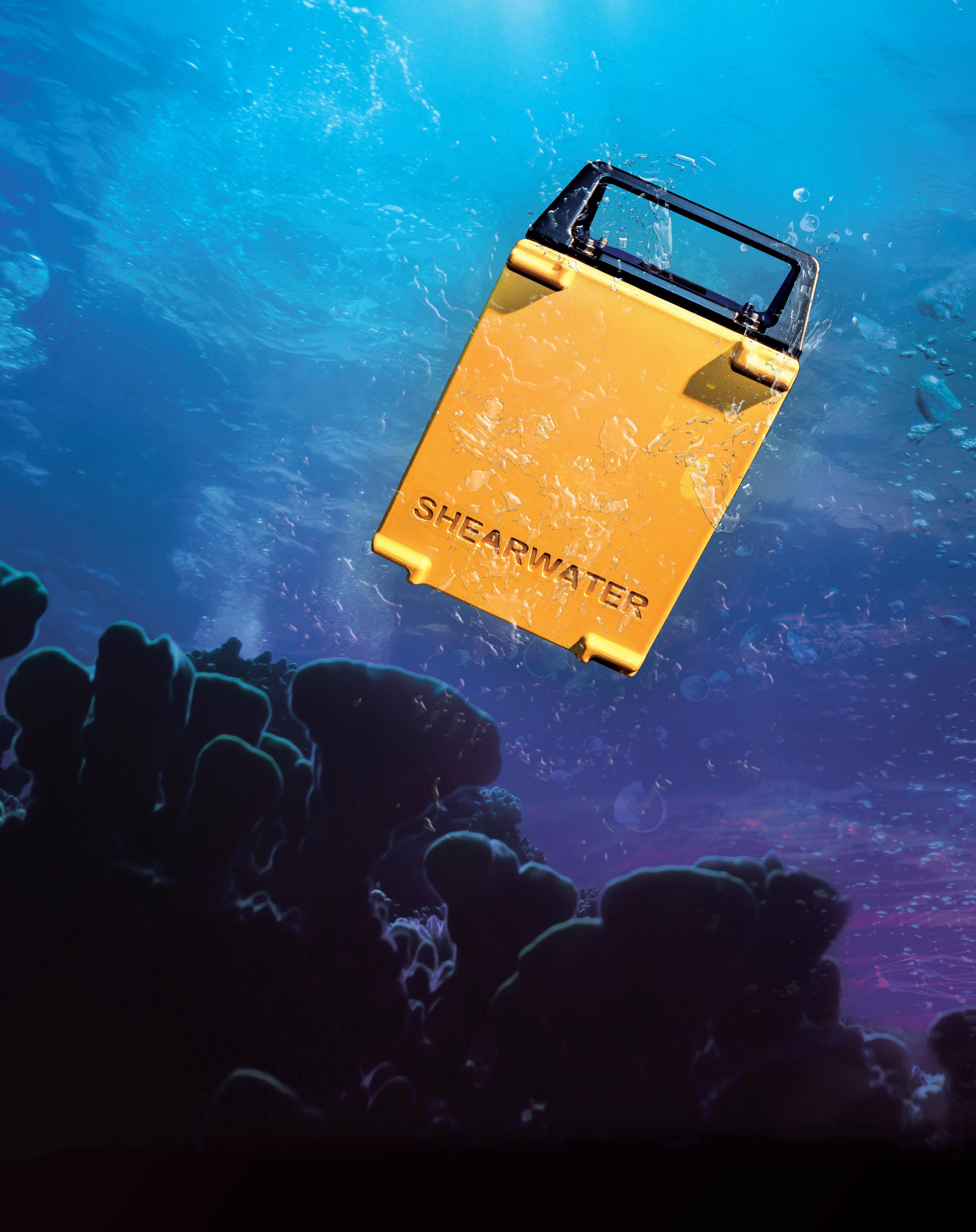SPECIAL TOPIC Marine Acquisition

EAGE NEWS EAGE 2023 technical programme shapes up
TECHNICAL ARTICLE Machine learning-assisted interpretation
INDUSTRY NEWS UK launches big licensing round


EAGE NEWS EAGE 2023 technical programme shapes up
TECHNICAL ARTICLE Machine learning-assisted interpretation
INDUSTRY NEWS UK launches big licensing round

An EAGE Publication
CHAIR EDITORIAL BOARD
Gwenola Michaud (Gwenola.Michaud@cognite.com)
EDITOR
Damian Arnold (editorfb@eage.org)
MEMBERS, EDITORIAL BOARD
• Lodve Berre, Norwegian University of Science and Technology (lodve.berre@ntnu.no)
Satinder Chopra, SamiGeo (satinder.chopra@samigeo.com)
Anthony Day, PGS (anthony.day@pgs.com)
• Peter Dromgoole, Retired Geophysicist (peterdromgoole@gmail.com)
• Rutger Gras, Consultant (r.gras@gridadvice.nl)
• Hamidreza Hamdi, University of Calgary (hhamdi@ucalgary.ca)
• Clément Kostov, Freelance Geophysicist (cvkostov@icloud.com)
• John Reynolds, Reynolds International (jmr@reynolds-international.co.uk)
James Rickett, Schlumberger (jrickett@slb.com)
Peter Rowbotham, Apache (Peter.Rowbotham@apachecorp.com)
• Dave Stewart, Dave Stewart Geoconsulting Ltd (djstewart.dave@gmail.com)
• Pamela Tempone, Eni (Pamela.Tempone@eni.com)
• Angelika-Maria Wulff, Consultant (gp.awulff@gmail.com)
EAGE EDITOR EMERITUS
Andrew McBarnet (andrew@andrewmcbarnet.com)
PUBLICATIONS MANAGER
Martha Theodosiou (mtu@eage.org)
MEDIA PRODUCTION
Saskia Nota (firstbreakproduction@eage.org)
PRODUCTION ASSISTANT
Ivana Geurts (firstbreakproduction@eage.org)
ADVERTISING INQUIRIES corporaterelations@eage.org
EAGE EUROPE OFFICE
Kosterijland 48
3981 AJ Bunnik
The Netherlands +31 88 995 5055
• eage@eage.org www.eage.org
EAGE MIDDLE EAST OFFICE
EAGE Middle East FZ-LLC
Dubai Knowledge Village
Block 13 Office F-25 PO Box 501711
Dubai, United Arab Emirates
• +971 4 369 3897
• middle_east@eage.org
• www.eage.org
EAGE ASIA PACIFIC OFFICE
UOA Centre Office Suite 19-15-3A
No. 19, Jalan Pinang
50450 Kuala Lumpur
Malaysia
• +60 3 272 201 40
• asiapacific@eage.org
• www.eage.org
EAGE AMERICAS SAS
Edificio Centro Ejecutivo Santa Barbara
Av. Cra. 19 #118-95 - Office: 501
• +57 310 8610709
• americas@eage.org
• www.eage.org
EAGE MEMBERS CHANGE OF ADDRESS NOTIFICATION
Send to: EAGE Membership Dept at EAGE Office (address above)
FIRST BREAK ON THE WEB www.firstbreak.org
ISSN 0263-5046 (print) / ISSN 1365-2397 (online)
The making of a node
41 Derisking offshore windfarm installation by sub-seafloor boulder detection based on dedicated seismic diffraction imaging Stefan Wenau, Benjamin Schwarz, Viola Bihler, Eric Boyer and Benedict Preu

47 Imaging the subsurface using acoustic signals generated by a vessel Stian Hegna
55 The making of a node
Ed Hager, Leendert Combee, Vidar Jaavold and Vidar Husom
61 Correlation between homologous basins in the Southern Atlantic indicates great potential for the Southern Pelotas Basin in Brazil Pedro V. Zalan, Randall Etherington and Milos Cvetovic
67 Ultra-high resolution seismic: applications of P-cable in the energy transition
71
Lucy MacGregor, Larry Scott, Richard Cooper and Jon Nicholls
Simulating large-scale streamer and OBN acquisition over subsalt targets — an example of successful remote collaboration between survey design and survey evaluation
Dave Ridyard, Dave Monk, Damian Hite, Lars Zühlsdorff and Trond Haugland
77 Successful modelling and sea trial of new low-frequency sources using standard onboard air supply Jeremy Aznar, Boris Kuvshinov, Guido Baeten, Hamish Macintyre, Julien Large and Shuki Ronen
82 Calendar
cover: An ocean bottom seismic vessel. This month we showcase the latest developments in the growing field of nodal acquisition.
Esther Bloem Chair
Andreas Aspmo Pfaffhuber Vice-Chair



Micki Allen Contact Officer EEGS/North America
Adam Booth Committee Member
Hongzhu Cai Liaison China
Eric Cauquil Liaison Shallow Marine Geophysics
Deyan Draganov Technical Programme Officer
Wolfram Gödde Liaison First Break
Hamdan Ali Hamdan Liaison Middle East
Vladimir Ignatev Liaison Russia / CIS
Musa Manzi Liaison Africa
Myrto Papadopoulou Young Professional Liaison
Catherine Truffert Industry Liaison


Panagiotis Tsourlos Editor in Chief Near Surface Geophysics
Florina Tuluca Committee member

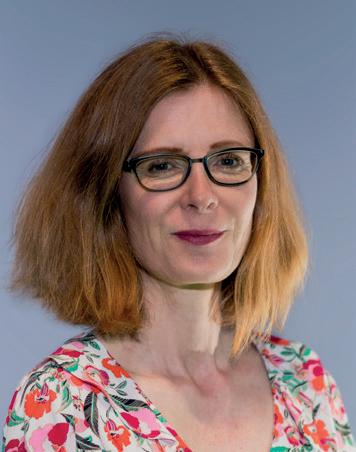
Lucy Slater Chair
Yohaney Gomez Galarza Vice-Chair
Michael Peter Suess Immediate Past Chair; TPC
Erica Angerer Member
Wiebke Athmer Member
Juliane Heiland TPC
Tijmen Jan Moser Editor-in-Chief Geophysical Prospecting


Adeline Parent WGE SIC Liaison
Francesco Perrone Member
Matteo Ravasi YP Liaison
Jonathan Redfern Editor-in-Chief Petroleum Geoscience
Giovanni Sosio DET SIC Liaison
Aart-Jan van Wijngaarden Technical Programme Officer
SUBSCRIPTIONS
First Break is published monthly. It is free to EAGE members. The membership fee of EAGE is € 80.00 a year including First Break, EarthDoc (EAGE’s geoscience database), Learning Geoscience (EAGE’s Education website) and online access to a scientific journal.
Companies can subscribe to First Break via an institutional subscription. Every subscription includes a monthly hard copy and online access to the full First Break archive for the requested number of online users. Orders for current subscriptions and back issues should be sent to EAGE Publications BV, Journal Subscriptions, PO Box 59, 3990 DB, Houten, The Netherlands. Tel: +31 (0)88 9955055, E-mail: subscriptions@eage.org, www.firstbreak.org.
First Break is published by EAGE Publications BV, The Netherlands. However, responsibility for the opinions given and the statements made rests with the authors.
COPYRIGHT & PHOTOCOPYING © 2022 EAGE
All rights reserved. First Break or any part thereof may not be reproduced, stored in a retrieval system, or transcribed in any form or by any means, electronically or mechanically, including photocopying and recording, without the prior written permission of the publisher.
PAPER
The publisher’s policy is to use acid-free permanent paper (TCF), to the draft standard ISO/DIS/9706, made from sustainable forests using chlorine-free pulp (Nordic-Swan standard).





Join us for another fantastic Annual Meeting in Vienna, which strives to set the bar for the advancement of knowledge in the complex and wide fields of geoscience and engineering.

It’s already time to focus on the conference agenda for the next EAGE Annual being held in Vienna on 5-8 June 2023 and your opportunity to participate in the Technical Programme. The theme of the event is ‘Securing a Sustainable Future Together’ and is bound to stimulate numerous discussions on energy security and independence, a sustainable energy transition and the need to modify the approach to address the challenges in the ever-changing landscape of our industries.
The EAGE Annual remains the largest multi-disciplinary geoscience and engineering event, highlighting the latest in subsurface research and developments. The conference will as usual showcase how the latest geophysical, geological, and engineering research, ideas and case studies have a vital contribution to make in the quest for solutions. We hope to build on the high-quality Technical Programme delivered in Madrid and continue the discussion on increasingly relevant issues. Many of the best-attended technical sessions covered the low carbon business areas, e.g., CCS, CCUS, H2 storage, geothermal and we look forward to seeing more developments on these themes.
You can expect a Technical Programme with over 1300 oral and poster presentations and a series of dedicated sessions led by our special interest communities. In addition to the Technical Programme, there will be presentations at the Digital Transformation and Energy Transition areas in the Exhibition. You will also have the possibility to attend workshops tackling hot topics in the industry.
Participating in the Technical Programme is a great opportunity to share your expertise and knowledge with a global audience of energy, resource and infrastructure professionals, as well as bring attention to your work through our sessions and publication in the extensive conference proceedings. If you want to contribute, this is the moment to review the topics that can be found on www.eageannual.org and to submit an abstract before 15 January 2023.
The Technical Programme for EAGE2023 recognises the increasing attention for energy transition and renewable resources. Therefore, all topics related to the energy transition are now gathered in one theme in the call for abstracts, and will be clearly present in the technical programme. The total spectrum of topics reflects the broad subsurface interest in the EAGE: ranging from geo physics and geology, to infrastructure and reservoir engineering, integrated subsurface cases and energy transition.

After France, Portugal, Sweden, The Netherlands, and many other locations, Serbia hosted the EAGE Near Surface Geoscience Conference and Exhibition for the first time. It was thrilling to welcome over 400 delegates and 29 exhibitors to this year’s meeting held on 18-22 September in Belgrade and see a rich programme spread over the three parallel conferences.
The event opened with an interesting panel discussion on the impact of resource extraction and the role of mining in a changing world. Our panellists talked about the improvements in geophysical technologies allowing for improved, non-destructive surveys, environmental controls for mining exercises, as well as the importance of communication technology during the developments.
The 28th European Meeting of Environmental and Engineering Geophysics continued encompassing traditional and emerging topics and new developments in the near-surface field. Taking the opportunity of hosting this year’s event in Serbia, the conference featured special oral and poster presentations on ‘Applied Geophysics Case Studies from the Balkans’.
but also covered the technical and legal limitations related to sensors heavier than the typical 4 kg limit. The conference programme included presentations on airborne, drone- and satellite-based sensors applying most geophysical methods that don’t require physical contact with the ground. Also the growing field of hybrid electromagnetics combining ground-based transmitters with drone-based receivers was showcased from various groups.
The technical sessions of the 4th Conference on Geophysics for Mineral Exploration and Mining included excellent talks by students, professors and industry professionals covering a wide range of geophysical topics, spanning from seismic methods to AI and machine learning and airborne IP methods. The week’s programme concluded with a stimulating joint session with the airborne, drone and robotic geophysics community on airborne EM for mineral and mining.
The technical programme also included two special sessions featuring the best presentations from SAGEEP and KEGS Symposium held in 2022.
The traditional Icebreaker Reception on the exhibition floor and Conference Evening at the Belgrade Fortress marked opportunities for the full community to gather, network and take a break from the busy conference agenda.
in-person opportunity to network with the newly established EAGE UAV community leading to drafting the possibility of a UAV geophysics workshop in spring 2023 – stay tuned.’
The 3rd Conference on Airborne, Drone and Robotic Geophysics opened with keynotes covering airborne and drone geophysics and a panel discussion on ‘Piloted and unpiloted: What is the state of play in airborne geophysics?’ The panel discussion highlighted the substantial opportunity of drone-based geophysics versus traditional land-based acquisition
Another highlight at this year’s meeting was the official introduction of newly established EAGE special interest technical communities on Uncrewed Aerial Vehicles (UAV) and Geohazards. EAGE is proud to have a network of members interested in promoting the development and application of a multi-disciplinary approach to near-surface studies, and look forward to fostering innovation and technical progress, as well as the communication, fellowship and cooperation between those working, studying or otherwise interested in these fields.
Andi Pfaffhuber, CEO and founder of EMerald Geomodelling and vice-chair of the EAGE Near Surface Geoscience Division, commented: ‘It was a great first

In addition to the comprehensive technical programme and the exhibition, an assortment of additional activities was included, e.g., two hands-on workshops covering geotechnical/geophysical analysis and processing of several types of near-surface seismic data; two field trips to discover the underground of Belgrade Fortress at Kalemegdan and Western Serbia (Bajina Bašta and Višegrad) by bus, boat and train; a field demonstration programme in which some exhibitors put their products and technologies to the test; and an enriching community programme at the EAGE Community Hub.
Chris Nind, vice president business development at Abitibi Geophysics and co-chair of the 4th Conference on Geophysics for Mineral Exploration and Mining, said of the event: ‘The conference dinner and the tour of the old fortress were both great. It was wonderful to meet in-person again, and we all look forward to NSG2023 in Edinburgh.’
A big thank you to our local advisory committee, technical committees of the three parallel conferences, reviewers, speakers, session chairs, attendees, exhibitors and sponsors for making NSG2022 such a huge success.
Keep an eye on www.eagensg.org for updates on NSG2023 set to take place in Edinburgh, United Kingdom.


















































































































































































No magic involved here! Just our state-of-the-art multi-parameter FWI imaging technology. Delivering simultaneous high-resolution velocity updates and least-squares imaging. At high frequency, this revolutionary approach provides reflectivity images for both structural and quantitative interpretation, including angle stacks for AVA analysis. All without the need for a conventional processing and imaging workflow. AVA go at it!
A revolution in seismic imaging!












































































































































































































































































































































EAGE’s flagship digital transformation conference returns in 2023 following a successful second edition in Vienna earlier this year. The Third EAGE Digitalization Conference & Exhibition (EAGE Digital 2023) will take place in London on 20-22 March 2023 under the theme ‘Technology Driving Innovation for the Future’.
Hosted this time by Shell, the conference will once again bring together some of the greatest minds in our industry to showcase the newest technologies,
latest developments, state-of-the-art products and innovative services related to digitalization. The conference creates a powerful forum bringing together energy companies, cloud providers and the vendor industry for three days of transformative knowledge exchange and discussions.
Key to this success is the combination of strategic and technical streams alongside a robust exhibition and diverse networking and social opportunities. The broad selection of topics is sure to appeal
to professionals from a wide range of subsurface industries and technology backgrounds. High quality roundtables and panel discussions should inspire and trigger a lot of excellent discussions and new insights.
Submit your abstracts before 10 January 2023 to join an exciting lineup of leading experts in the technical programme. More information on the event including sponsoring, exhibition and speaking opportunities can be found at www.eagedigital.org.

EAGE is pleased to welcome the newest Technical Community on Geohazards. It is the network of members interested in promoting the development and application of a multi-disciplinary approach to the natural hazards assessment, fostering innovation and technical progress, as well as the communication, fellowship and cooperation between those working in, studying or otherwise being interested in these fields.
Committee members are Prof Olena Ivanik, Taras Shevchenko National University of Kyiv, Ukraine, who is chair 2022-24; Jean-Jacques Biteau, Total (retired), France; Prof Volodymyr Emeliyanov, Centre of Marine Geology, National Academy of Sciences, Ukraine; Prof Wei Wu, University of Natural Resources & Life Sciences, Austria; Oleksandr Menshov, Taras Shevchenko National University of Kyiv, Ukraine; Dmitry Bozhezha, National Academy of Sciences of Ukraine, Ukraine; and Diego Rovetta, Aramco Overseas Company BV, Netherlands.
agencies and scientists due to the high damages to people and infrastructure caused by these processes. That’s why the assessment of geohazards is a key element in the effective decision-making process and development of policy in the field of prevention of emergency situations. This is a multi-purpose process that allows us to identify, perform assessment and understand the scale and consequences of the risks that society faces.
The community was first introduced at the recently concluded Near Surface Geoscience Conference & Exhibition 2022 in Belgrade. The committee is composed of geoscientists who share a common goal of tackling natural geohazards issues and share best practices in assessing impacts in geoscience.
Collaboration in the study of geohazards could scarcely be more urgent. In the past years, more than 4 billion of people – nearly two-thirds of the world’s population – have been caught up in natural disasters. Earthquakes, floods, landslides, and other geohazards continue to cause tens of thousands of deaths, hundreds of thousands of injuries, and billions of dollars in economic losses each year around the world. It is important for the community to be informed of potential geohazards that may affect their wellbeing. Increasing resilience against geohazards is a top priority for the governments, national environmental
The sharing of scientific knowledge and new ideas are all fundamental for addressing the global challenges we face as communities around the world, and geohazards as a discipline, can play a suite of vital roles. This is something we all have a responsibility for. Members are encouraged to join the new EAGE Technical community on Geohazards to share the new ideas in the study of geohazards and promote innovation, technical progress and application of a multi-disciplinary approach to the natural hazards assessment.
Learn more about the community and what activities they have planned by visiting the website https://eage.org/ communities/geohazards/ and join us via LinkedIn https://www.linkedin.com/ groups/12705185/.

Conference co-chairs Ralf Schulze-Riegert and Mickaele Le Ravalec share their thoughts on the recently concluded EAGE European Conference on the Mathematics of Geological Reservoirs (ECMOR) in The Hague, The Netherlands.


ECMOR 2022 was a fantastic experience for all participants joining the event in-person. After a fully digital online conference in 2020, the bi-annual European Conference on the Mathematics of Geological Reservoirs was organised as a hybrid event in 2022. However, with the understanding of the importance of face-to-face discussions in the scientific discourse, all oral presentations had to be delivered in presence.
Poster presentations were delivered either on-site or online, organised by the EAGE technical team. This decision taken by the ECMOR scientific committee guaranteed that close to 75% of 120 registered attendees were present on-site. With 25 minutes time per author, lively discussions were promoted following each technical presentation.
Despite a slow increase in travelling compared with pre-Covid times, participants from universities, research institutes and industry represented 20 different countries across Europe, North and South America, Asia and Australia. At the same time Russia’s unprovoked war against Ukraine limited opportunities for participants from Russia who in the past have added a significant proportion of scientific presentations at ECMOR conferences.
Conference presentation rooms were side-by-side and directly connected to an open area used for all coffee breaks,
poster presentations and social gathering throughout the conference. Fixed table and seating arrangements were absent for lunch breaks and the traditional conference evening to motivate continuous movements and comminglinga with new groups and persons for small talk and technical discussions.
During his opening speech, Ralf Schulze-Riegert described the transition of research areas in recent years covered by ECMOR. In more than 30 years ECMOR has continuously evolved, starting in 1989 with a focus on physical modelling and computational methods implemented in reservoir simulation tools, to a much broader application domain involving the mathematics of geological reservoirs. This includes new modelling approaches applied to geothermal power, carbon capture and hydrogen storage to better predict, reduce costs, and mitigate pre-development risks due to subsurface uncertainty.
The transition message was supported by Prof Ad van Wijk from the Technical University of Delft with an invited keynote speech on ‘Hydrogen, key to a carbon free energy system’. His message was the systemic role of hydrogen as a future carrier of energy in a zero-carbon economy by 2050. While hydrogen is produced on an industrial scale above surface, surplus volumes of hydrogen will be stored in
geological reservoirs, e.g., depleted gas reservoirs. This draws a direct connection to the scientific core expertise on reservoir modelling, fluid flow in porous media as well as bio-chemical processes.
Technical sessions at ECMOR 2022 were developed around three main topics, each covering about one third of all registered presentations: Physical modelling, computational methods as well as uncertainty quantification and optimisation. Most popular subthemes were physics-based/machine learning and data-driven/hybrid methods followed by data assimilation/history matching, mesh generation/discretisation schemes and EOR/CO2 sequestration with a focus on physical modelling.
The conference environment supported an open and lively atmosphere across all oral presentations. The high level of
participation and discussions continued throughout the conference and documented interest in quite distinct topics, e.g., code designs on GPU architectures with application to carbon capture storage, statistical methods for iterative well placement design and uncertainty assessment of natural fractured reservoir performance.
The number of paper submissions was twice as high as for the first ECMOR conference in 1989 and about half the number of paper submissions for the recent pre-Covid ECMOR conference in 2018. The feedback from participants at ECMOR 2022 was very encouraging – sometimes less is more. Thanks to Equinor and Schlumberger for sponsoring the event and contributing to make the conference a success.

During the conference evening, Mickaele Le Ravalec announced the new co-chairs of ECMOR 2024, Prof Stephan Matthai from the University in Melbourne and Arne Skorstad from Resoptima. They will lead the scientific committee towards ECMOR 2024 which will be held in Oslo, Norway.
Norway has more than 50 years of history in developing subsurface energy systems in the North Sea. In Europe, Norway is a key player providing energy to the market in a transition phase to a net-zero carbon economy, and it continues to make significant contributions in research and development to further develop technologies for efficient production and advanced modelling systems supported by several research institutes and universities. The Northern Light project has received Norway’s first licence for CO2 storage on the Norwegian Continental Shelf and will later be used by industrial companies across Europe to store CO2 in the North Sea. This will make an excellent setting for the next ECMOR 2024 conference.
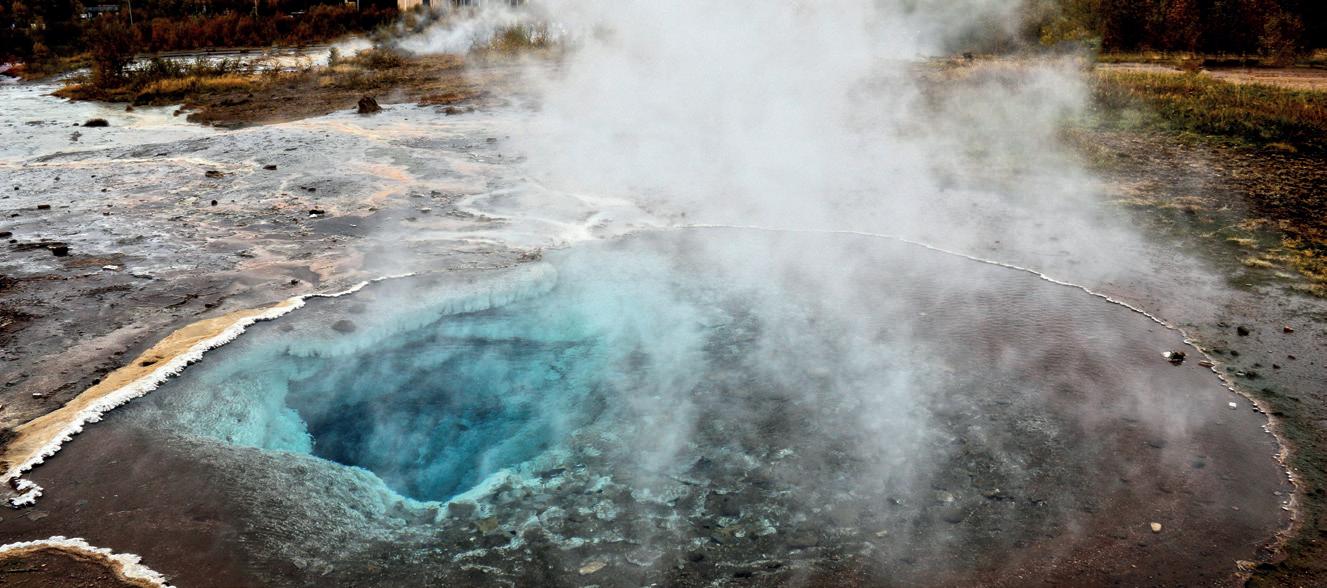
For the first time, the Laurie Dake Challenge for 2023 will focus student teams on geothermal energy exploration. This change from traditional oil and gas exploration or development studies indicates the shift in which attention is needed to produce stable and low-carbon energy throughout Europe and the world.
Universities are invited to participate in the Laurie Dake Challenge with a multi-disciplinary team of three to five students (one PhD student per team allowed). The competition consists of three rounds. After each round, a number of teams will be allowed to continue until we reach the third and final round where six teams have a chance to present their solutions at the EAGE Annual Meeting next year in Vienna.
The challenge involves the assessment of a portion of a basin where geothermal energy production is thought to be feasible. For the first phase of the challenge, a limited seismic and well database will be provided which, combined with background research, will be the basis for a technical study. This study should break down individual potential thermal resources and highlight the possible
zones of application for thermal energy production.
In the second phase, the geothermal potential will be used to create a development plan for the area. It should include the economic and risk factors (including environmental and human risks) and the plans to mitigate them.
A maximum 3000-word report should be created, including images, describing and providing evidence for each team’s best development plan for the area. A combination of geothermal energy production and storage techniques to optimise the development plan is encouraged. As these technologies are in their infancy, we
are excited about the broad range of ideas that could be imagined.
The application round for the 2023 competition is already open and will close on 20 January 2023, the teams for the next round will be informed shortly afterwards. The dataset is provided by OMV. The finals will be held during the 84th EAGE Annual Conference & Exhibition.
The deadline for application is on 20 January 2023, at 12:00 (CDT). See https://eage.org/students/join-the-lauriedake-challenge/.
If you have any further questions do not hesitate to contact us at students@eage.org.
tinuing series of free learning resources. These are separate from our paid courses, which are accessible for all, such as the Distinguished Lecturer Programme (DLP) and the E-Lecture webinars.
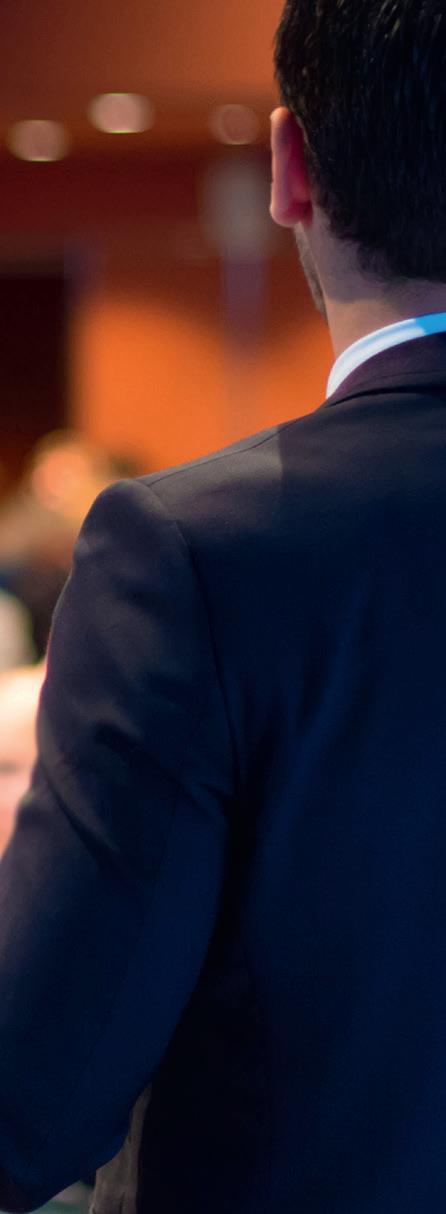
EAGE is driven by its goal of promoting the development and application of geosciences and related engineering subjects, as well as of fostering innovation and technical progress. That’s why EAGE takes pride in producing a con-

These short formats, available in our Learning Geoscience platform, are created to update you with the latest developments in the geoscience and engineering fields, encourage knowledge exchange, and create connections among students, professionals, and enthusiasts. This month, you can learn more about derisking of geological seals for a potential offshore CO2 storage site presented in the DLP Webinar ‘Distribution of Faulted Mesozoic and Tertiary Seals for CO2 Storage in the Northern Horda Platform, Norwegian North Sea’ by Johnathon Osmond (Exploro Geoservices).
While the live webinars are only available for members, E-Lectures remain free and accessible for all. During the past few months, a number of E-Lectures have been added to
our selection, and more are still being produced and will be available soon. Some examples of the latest content you can access now are ‘FWI imaging: Unlock unprecedented seismic resolution’ by Zhiyuan Wei (CGG), ‘Active and passive 3D seismic survey around the Scrovegni Chapel using autonomous nodes’ with Ilaria Barone (University of Padua), and ‘Seismic monitoring of the United Downs Deep Geothermal Power Project (UDDGP) site with public seismic networks’ by Germán Rodríguez (University of Bristol).
By becoming an EAGE member, you support the creation and development of free and relevant content. It also gives you countless possibilities to expand your network and to update you with the latest developments in the industry. Become a member now and keep strengthening your career!
Check all the free learning opportunities available for you: Image text:
This is a message for all students out there … The days are getting shorter and suddenly all those assignment deadlines and year-end assessments are looming. But in all this hustle and bustle, we don’t want you to forget to renew your student membership and create your Student Chapter.
Remember that you can start your membership renewal process today. Our membership team is working hard to help you, so keep an eye on your inbox.
The EAGE Student Chapters worldwide serve as hubs of communication for geoscience and engineering students to meet, exchange ideas and initiate activities under the EAGE umbrella and collaborate with EAGE’s Student Affairs Team.
Geophysical Prospecting (GP) publishes primary research on the science of geophysics as it applies to the exploration, evaluation and extraction of earth resources. Drawing heavily on contributions from researchers in the oil and mineral exploration industries, the journal has a very practical slant. A new edition (Volume 70, Issue 9) will be published within November, featuring 8 articles.
Editor’s Choice articles:
• Explosive source signature determination: Two unequal shots in the same hole - Anton Ziolkowski
• Do cracks improve the conductive ability of porous rocks?
- Tongcheng Han
Petroleum Geoscience (PG) transcends disciplinary boundaries and publishes a balanced mix of articles that drives the science to enhance sustainable development covering all aspects of the petroleum system. The journal content reflects the international nature of the research. A new edition (Volume 28, Issue 4) will be published in November, featuring 7 articles.
Editor’s Choice articles:
• New insights into the structure, geology and hydrocarbon prospectivity along the central-northern Corona Ridge, Faroe–Shetland Basin - Lucinda K. Layfield et al.
Here are four good reasons why you continue being part of the EAGE community or establish your chapter.
First, our online database EarthDoc. Over two-thirds of all students listed EarthDoc and access to its papers as a main EAGE membership benefit. EarthDoc is a great help when researching methodologies, case studies, or new techniques for both students and professionals alike, so you can make sure to maintain your access by renewing early.
Second, event registration discounts. If you are considering a conference or workshop in 2023, then make it an EAGE one with our rates for student members, giving you even more bang for your buck.
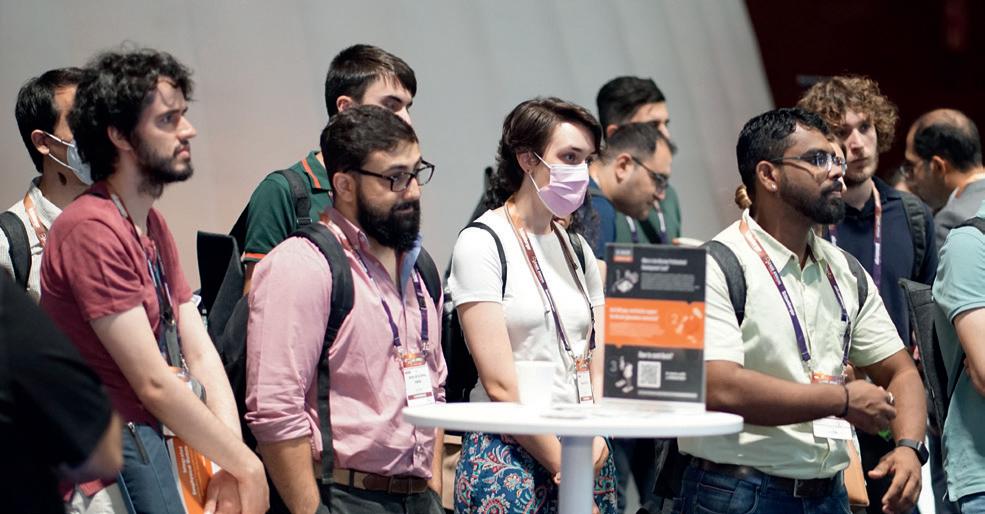
Third, another key benefit is First Break. Stay on top of the latest developments in the industry, academia, and EAGE itself with our acclaimed monthly journal. Each month First Break has a different special topic, allowing you to read up on a wide variety of scientific disciplines.

Fourth, each Student Chapter receives 15 free student memberships and exclusive access to the 2023 EAGE e-Summits which will allow you to take advantage of our professional development resources and connect you with other students all around the world. You may also challenge your knowledge in our competitions and earn great prizes!
We hope we can welcome many of you as members again in 2023. We encourage you to share why you are renewing via our EAGE Student Facebook page so others can see why it is so valuable.
from
Shearwater Geoservicesprovides this personal report on EAGE’s 3rd Marine Acquisition Workshop held on 22-24 August in Oslo.
Like many, I was delighted to see old friends and make new friends during this in-person event. Though online workshops in recent times meant many of us could attend more workshops, there is still a place for everyone to be in the same room at the same time.

First off, great choice of venue - the Gamle Logen situated in central Oslo. The place has a great sense of grandeur coming from the Order of Freemasons, who built as a Masonic lodge in 1836. Secondly, the food was excellent, with plenty to keep the mind, body and soul fed. Most importantly, the EAGE organising team was well prepared and had everything just right, including an excellent workshop dinner where all enjoyed some great seafood in the Louise Restaurant.
The technical committee chose well with the keynotes and papers for the workshop programme. Even better was the organisation of those talks into topic-coordinated sessions, something I find critical to my enjoyment of workshops. This is not always possible if there are just too many disparate papers in a workshop.
Each day was kicked off with keynote speakers, two from Equinor. Jens Olav Paulsen presented Equinor’s way forward in the new energy markets. This in contrast to the biologist, Jürgen Weissenberger. His informative talk on noise in the marine environment and what it means to marine organisms helped my understanding of the topic.
My personal obsession with low-frequencies was well served by the keynote from Fons ten Kroode followed by papers showing the humble air source has still more to give. These ranged from Susanne Rentsch Smith’s paper on low-frequency source tuned using the pressure field, the super-large chambered TPS source, to the innovate approach from Prof Martin Landrø’s concept of super-shallow towed
airguns, where the bubble is allowed to erupt directly into the air. The future of seismic sources might be marine vibrators. Strong hints that these may finally be becoming a commercial reality came from three talks from Stephen Seck, Thomas Elboth and Anders Mattsson.
CCS and the new energy were represented, too, each with their sessions. A great keynote from BP’s Charles Cooper on the surveys for the Northern Endurance Partnership, a CCS consortium, kicked off the CSS session. This was followed by Carine Roalkvam who showed advances in towed streamer designs with wide-tow and multi-sources techniques that bring new possibilities in data quality and are adaptable from the high-res CCS surveys to the most extensive exploration campaigns. Along with multi-sources comes the problem of deblending the sources, and Simon Redfearn showed a solution with the apparition method.
To add some variety and remind us of the breadth of geophysics: the talk on seismic exploration on the Moon and Mars given by Prof Johan Robertsson was fascinating.
A highlight for me was Per Eivind Dhelie’s paper on Lundin’s recent survey in the Barents Sea. With great enthusiasm he convinced us that the survey was one of the most complex shot - with free-fall nodes, a source vessel over streamer, a streamer vessel and finally ROV node recovery. I hope the complexity of the operation will be reflected in the simplicity of imaging and look forward to finding out the final results of this innovative survey.
On the third day, there was a short course titled ‘Geophysical Monitoring of CO2 Storage’ given by Prof Landrø (Norwegian University of Science & Technology, Norway). It was well attended, with most workshop participants opting to stay for the course. For acquisition
geophysicists, efficient monitoring presents a novel problem, as unlike conventional oil and gas geophysics, where 4D monitor surveys add value, monitoring CO2 bears a cost. The course covered many aspects of CO2 storage - from rock physics, time-lapse with seismic and non-seismic methods to detecting potential weaknesses in the overburden. Courses such as these are very much needed. They are able to combine the relevant information in one session by an expert thereby allowing us to see not only the possibilities for geophysics but also the value chain that it needs to operate in. What also helped were the discussions encouraged within the course, bringing in even more knowledge and expertise for the participants.
A great three days, shame I need to wait two years for the next one …
in artificial intelligence and machine learning. The conventional methods act as the cornerstone of these foundations and allow deep learning networks to build on them, while also utilising all imaging and inversion techniques to provide all available types of information and data to these networks.
The 6th EAGE Rock Physics workshop, to be held in Riyadh, Saudi Arabia on 15-17 November 2022 is due to discuss the vital role of rock physics in understanding the reservoir.

The topic is only getting bigger with the continuous and rapid advancements
The workshop will focus heavily on the developments in machine learning and deep learning in rock physics, and how we can match the similar improvements we see in seismic imaging. While the focus is on artificial intelligence, conventional rock physics models play an even more important role as the base for the deep learning models. These conventional models and all advancements
to them will also be discussed during the workshop. Distinguished speakers include Prof Manika Prasad, professor of geophysics, Colorado School of Mines, will be addressing the ‘Challenges in Rock Physics - Building Data Learning Models Informed by Experiments’. Olivier Kirkstetter geophysics specialist, ADNOC Upstream, tackles the current challenges in applied rock physics and seismic reservoir characterisation in Abu Dhabi while Prof Lev Vernik (University of Houston) will be sharing his expertise in multi-scale rock physics modelling of sedimentary rocks.
Visit the website for more details - https://eage.eventsair.com/sixth-eagerock-physics-workshop/
Plenty of new content comes available in EarthDoc during the month of November.
The 3 rd EAGE Global Energy Transition Conference & Exhibition, one of our flagship events, takes place in The Hague, on 7-9 November. Over 100 abstracts have been accepted and will become available on EarthDoc two weeks before the conference.
The 2 nd EAGE Workshop on East Canada Offshore Exploration will be hosted in St John’s, Canada, aspiring to feature the latest advances in geological and geophysical sciences, as well as drilling and specific HSE and operational requirements in a difficult environment. Approximately 20 presentations are expected.
Two more events are taking place in Rio de Janeiro (Brazil): the 1st EAGE/SBGf Workshop on Reservoir Monitoring is scheduled for 21-22 November and will include approximately 20 abstracts. The 3 rd EAGE Conference on Pre-Salt Reservoirs is planned for 23-25 November with approximately 30 presentations. Proceedings of these two events are expected to become available on EarthDoc two weeks in advance.
The Asia Petroleum Geoscience Conference & Exhibition (APGCE), featuring nearly 100 presentations, will take place in Kuala Lumpur on 28-29 November.
The 8 th EAGE Arabian Plate Core Workshop: From Play Concepts to Reservoir Heterogeneity is planned for 28-30 November in Dhahran, featuring approximately 20 presentations.
New issues of Geophysical Prospecting and Petroleum Geoscience will be released in November.
Lastly, don’t forget to check our open access First Break articles from October and November.

Our July event focused on networking between young professionals and student members of the EAGE, organised in cooperation with the Young Professionals chapter of EAGE and the Delft Organisation of Geophysics Students chapter of EAGE.
It was the second live event of the year, a welcome occurrence after two years of only virtual events, and a good moment to organise a big three-part event.
We started off with some team-building activities for students and young professionals on the Scheveningen beach. After a week of great weather, the sun had unfortunately disappeared on the day. This combined with the strong winds meant that only the most robust of geoscientists were hardy enough to show up. On the upside the entire beach was our private playground, with no other souls in sight. Participants were split into two teams, and therefore had to depend on their teammates artistic, navigational
and sensory skills. During the games a beautiful map of The Netherlands was drawn on the beach and students had to cross the beach blindfold relying solely on audible instructions.
Next, we moved to the Beach Club to meet up with the other local chapter members. Here, invited speaker Mathijs Koymans from KNMI presented his work on passive assessment of geophysical instruments using electrical network frequency analysis. He said he had been inspired by a YouTube video by Tom Scott on observable fluctuations of the frequency of the electrical grid. In Europe the frequency of the alternating current is on average kept at 50 Hz, however deviations up to 0.1Hz do occur.
Koymans proposed that we could benefit from the occurrence of this electrical network frequency (ENF) in geophysical data. First, it was shown that the ENF recorded as noise in geophysical data could be matched with the open reference data of the ENF provided by grid operators to recalibrate instruments and correct timing errors. A second application of the ENF signal was to detect orientation anomalies in multi-component stations. If the source of the ENF signal is known, one may be able to find errors in the metadata of the stations.
Our event concluded with a BBQ. Here local chapter members were able to (re)connect and socialise, as well as swap stories about the past years.
Stay informed about the chapter activities through the LinkedIn page https://www.linkedin.com/ groups/13690220/ and become a member by sending an email to eageLCNetherlands@gmail.com.

The 8th edition of the longstanding EAGE Arabian Plate Core Geology series of workshops taking place in Dhahran, Saudi Arabia on 28-30 November 2022 will feature a very special core display. Over 350+ metres of core from hydrocarbon fields around the Arabian Plate will be on view for discussion by workshop participants, and available for examination throughout the workshop.
With the strong focus on sedimentology and stratigraphy, the core display helps to compare regional variations in reservoir, seal and source rock faci-
es, as well as in the expression of key stratigraphic surfaces such as sequence boundaries and flooding surfaces. With sedimentation patterns that go beyond country boundaries, the workshop is of great interest to both the explorationists as well as reservoir geologists. The meeting seeks to attract contributions covering a wide range of topics, and a particular focus will be on evaporite deposits, and conventional and unconventional source rocks. Regional sequence stratigraphic correlations are needed to enhance the current understanding of the succession. A
robust technical programme covering the region is promised.
Visit the event website for more details - https://eage.eventsair.com/eighth-arabian-workshop/

EAGE will be collaborating with the European Association of Organic Geochemists (EAOG) on the organisation of the 31st International Meeting on Organic Chemistry (IMOG) to be held in Montpellier, France from 10-15 September next year. This will be the fourth occasion on which the two associations have worked together on the biennial event.


Topics using new analytical techniques/ approaches, advanced data evaluation tools such as machine learning which address the scientific basis for achieving sustainability goals e.g., sources and sinks of GHG and microplastics, remediation, organics in aqueous fluids, are especially welcome.
The final session topics and arrangement will be at the discretion of the scientific committee based on the submissions, trends, and best reflection of diversity.
The IMOG Conference brings together the best academic minds in the field of organic matter cycles (over geological and modern time scales), as well as integrated paleoenvironmental and climatic studies. In addition, the industry participants will present the latest tools and understanding needed to improve the full life cycle activities in exploration, production, decommissioning as well as new relevant energies. The five-day conference also includes ample social and networking activities.
This year the Call for Abstracts topic list for IMOG2023 has been expanded to reflect the evolution of the field and to draw new tools, discoveries, and applications to the existing science. Submission of abstracts are invited on topics including:
• Biogeochemistry – the origin, diversity, properties, and interpretative potential of bio-to geo-molecules;
• Paleoenvironments and Paleoclimates – the interpretation of diverse families of organic geomolecules to better understand past environments and climate;
• Petroleum and Coal Geochemistry –the use and interpretation of molecules specifically related to naturally occurring petroleum, gases, and coals;
• Soil and Wetland Geochemistry – the specific use of soil and wetland, e.g., terrestrial molecules in both modern and ancient settings;
• New Trends, Techniques, & Sustainability in Organic Geochemistry – this topic again serves to promote and disseminate new ways of producing and using organic geochemistry data.
Abstract deadline is 1 February 2023, with the ability to submit a ‘late breaking’ abstract in July (see www. imogconference.org for more details). Proceedings will in due course be accessible on EarthDoc.
Formed in 1981, the vision of EAOG is to constantly evolve to the needs of its strong international community by providing the premiere space for creating, disseminating, discussing, and preserving organic geochemistry knowledge from ancient to modern systems, on Earth and beyond. It aspires to contribute to understanding Earth, past present and future, for generations to come.
Latin America is turning out to be hive of activity for EAGE student chapters.

In Colombia, the EAGE Student Chapter University of America organised a conference on the challenges of
the local energy industry, with Felipe Bayon, president of national oil company Ecopetrol, as the main speaker. He talked about recent gas discoveries in the Colombian offshore; the company’s contribution to energy transition (by operating solar panel farms and CCUS), as well as the country’s hydrogen production potential.
Elsewhere in Mexico, the EAGE Student Chapter National Polytechnic Institute (IPN) met with the EAGE staff during the Second EAGE Workshop on Advanced Seismic Solutions in the Gulf of Mexico. Two of the Chapter’s members presented their posters at the event.
Additionally, the EAGE Student Chapter Universidad Autónoma del Carmen
(UNACAR) had an official possession ceremony in which the University’s Board of Directors recognised them as EAGE student members. Students also organised a project management webinar and a ‘Mexican Night Fair’ to collect funds for their future activities.
We are also glad to announce the reactivation of the EAGE Student Chapters Memorial University of Newfoundland (Canada) and Los Andes University (Colombia). This last group made a field trip to one of Bogota’s tallest hills, Cerro de La Cruz, as its first in-person activity implemented by EAGE student members. We thank all the students involved for their commitment to our Association!

The EAGE Student Chapter National University of Colombia (UNAL Bogota) is enjoying its new status having won the 2022 Best Student Chapter Award. For their hard work, innovative approach and commitment to the Association, it received a €2000 prize dedicated to support the Chapter’s activities. Congratulations!

Active since 2020, the group has been recognised for its commitment to the local geoscience and engineering community, including the recent ‘Geoquiz: Ocean and Climate 2022’, a field trip to Sierra Nevada El Cocuy (the largest glacial area in Colombia), and the upcoming Geo-
Hackathon, activity intended to improve student’s programming skills.

Besides its enriching webinars, forum sessions, contests and workshops, the EAGE Student Chapter UNAL Bogota also won second place in this year’s EAGE Online Global GeoQuiz. The competition was an opportunity to measure student knowledge and team working skills.
The Student Chapter is currently made up of 15 members divided into three seedbeds: volcanology and geothermal, geophysics and seismology, and paleoclimatology and glaciology. These specialised groups guarantee an inter-disciplinary approach to the study of earth sciences
as well as a response to the students’ interests.
Find out more about the EAGE Student Chapter UNAL Bogota by following it on social media channels: Instagram @ eage_unal and Facebook @eage.unalbog.

A Special Issue of Geophysical Prospecting is being planned for the August 2023 issue to cover the potential contribution of rock physics to the energy transition challenge.
The editorial board for this Special Issue is inviting contributions presenting novel theoretical, experimental and applied progress in measurement of fundamental and coupled phenomena, modelling, and inversion of rock physics, with a particular emphasis on the role of rock physics in the energy transition challenge.
Energy transition will depend on an increasing use of renewables, together with continuous and efficient underground storage activities related to both the H2-fuel economy and CO2 usage and storage schemes. The efficiency of underground storage relies on our best interpretation of the remote sensing data. Therefore, theoretical developments, laboratory experiments and digital simulations will be welcome for all applications from reservoir characterisation, to gas/ energy usage and storage, including but not limited to geothermal recovery, and H2 energy and CO2 storage.
The submission of papers is also encouraged that cover different topics, from pure, fundamental research to more applied demonstrations and integrated case studies, including experimental rock physics and rock mechanics, fundamental and coupled multi-physics modelling, and multiscale applications, fluid(s)-rock coupled phenomena in reservoir complexes,
advanced rock physics tools (digital image analysis and machine learning), and rock physics advances and applications in the energy transition pathway. Although the focus will be on the topics mentioned, contributions on more general rock physics aspects will be also considered.
Contributed papers are welcome to be submitted to Geophysical Prospecting by the normal procedure via the Research Exchange platform (https://wiley.atyponrex.com/journal/GPR), taking care on the online submission form to select the drop-down menu for the Special Issue: ‘Rock Physics contribution to the Energy Transition Challenge’. To ensure the manuscript is processed in a timely fashion, we recommend that authors clearly state
in the cover letter that the manuscript is submitted to this specific Special Issue, and notify the lead guest editor Dr Ismael Himar Falcon-Suarez (isfalc@noc.ac.uk) via email with the subject line ‘GP Special Issue submission’. Some important dates to keep in mind: Submission deadline: 1 February 2023, Final decision: 1 June 2023, Publication: August 2023.
Guest editors for the Special Issue are Ismael Himar Falcon-Suarez and Angus I. Best, National Oceanography Centre Southampton; Ludmila Adams, University of Auckland; Lucas Pimienta, Université de Pau; Giorgos Papageorgiou, University of Edinburgh; and Hector Marin-Moreno, Norwegian Geotechnical Institute.

Lifelong fascination with space?
Many in my generation were awed by the NASA space missions in the 1970s and 1980s as well as by Carl Sagan’s Kosmos TV series asking some of the really big questions that science seemed to be on the verge of answering. I have a vague recollection of watching TV broadcasts from one of the last Apollo missions on TV and got time off from school to watch the launch of the space shuttle Columbia on 12 April , 1981. From then on, I knew I wanted to study science.
Planetary interests now?
Together with my group and colleagues at ETH we have worked on seismic data from Apollo-17. We have been involved in the Insight mission landing two seismometers on Mars. We are also proposing new missions to the moon to detect ice using geophysical measurements and are involved in the Laser Interferometer Space Antenna (LISA) project which can be thought of a gigantic geophone for gravitational wave detection to (hopefully) be launched in just over 10 years’ time. Gravitational wave observations open up an entirely new window to observe the universe with different and complementary physics compared to observations today which are all based on observing electromagnetic waves.
Your military service?
I was in the supply troops which I guess is what Russia is short of…
Did
From a technical point of view very much so. An absolutely tremendous achievement
from an engineering point of view by the old Geco team in Asker, Norway. From a commercial point of view probably less so as the system is expensive and probably difficult to sell in a market of 3D marine seismic oversupply.
Future geoscience technology?
There are compelling arguments why 3D viscoelastic FWI is ultimately needed for complex sub-salt imaging. From an acquisition point-of-view we know that we need wide azimuth illumination, long offsets and low frequencies, but how to acquire such data in a cost-efficient way is critical. OBN and simultaneous source acquisition will remain key areas for exploration and development surveys.
Your current work?
In our laboratory, Centre for Immersive Wave Experimentation, we are pursuing some quite novel wave experiments by linking numerical modelling with wave experiments in real time. I have some new ideas how we can use DAS technology for near-surface monitoring applications. The space applications that I mentioned keeps me busy as well. Finally, together with a colleague, I have a company, Apparition Geoservices, offering new ways for simultaneous source acquisition of high-quality seismic data.
In academia, I think being around young people all the time challenges one not to becoming static in ways of thinking, particularly in a world of new technologies, while maintaining a critical perspective on
what is new and novel vs. useful. Also, I can work on whatever I like and the independence to find my own path is something that I value. However, industry is obviously far superior in bringing different competence and scrambling resources together to undertake big projects effectively. During my time in industry, I particularly enjoyed working in Asker where no challenge was too big.
I always encourage students to study what they think is fun. What they actually will work with will sort itself out eventually. Doing what you think is exciting will take you there. Geosciences have a key role to play in the biggest challenges and questions humankind is facing, be it energy or climate change mitigation or discovering how life emerged on Earth and possibly elsewhere in the universe. The geoscience degrees that we teach also prepare students with skills for many different careers.
An oasis of peace and tranquility! It has been a constant in the life for me and my family for over 20 years when we have moved around a lot. It is an old traditional farmhouse with many original details from as early as the 1800s unspoiled. My greatest hobby is to slowly renovate and look after the house. I also enjoy looking after the forest, hunting and fishing. I have an old Massey Ferguson tractor there that I enjoy using for various projects on the farm. It’s a different life compared to being professor and head of department at ETH in Zurich.





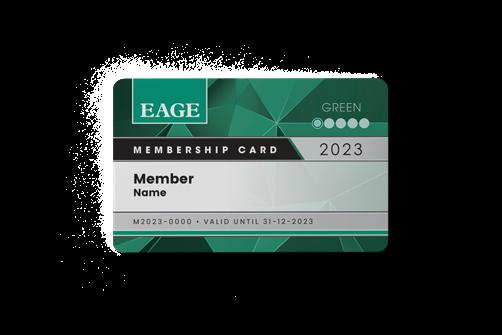











Reviewing the current enthusiasm for ocean bottom node (OBN) marine seismic acquisition, it is hard to resist that unsettling ageold aphorism ‘all that glistens is not gold’. Those with memories of the miserable history of the marine seismic business over several decades will surely ask ‘OBN can’t be that good can it?’ To which the answer depends on your perspective.
The commercial mainstream possibilities for OBN over towed-streamer and seabed cable for improved, focused structural, particularly reservoir, seismic imaging has been a long time coming given the first such survey was carried out by Seabed Geophysical on the Cantarell Field, Gulf of Mexico around 2003/2004. The company kept going with sporadic surveys using its CASE system, with competition in the early days coming from Fairfield, in particular, with ROV-assisted OBN surveys in deepwater Gulf of Mexico.
Neither company is in the business today, a possible omen. The Seabed Geophysical heritage can be traced through the Seabed GeoSolutions joint venture between Fugro and CGG to PXGEO, the seabed seismic company born out of the ashes of towed-streamer contractor Polarcus. Meanwhile TGS is owner and operator of legacy Fairfield technology through its purchase of Magseis Fairfield earlier this year.
This labrynth of ownership changes may be a clue to the potential fragility of the market for OBN where numerous factors are in play. We can at least get the basic principle out of the way. OBN tops every other technology for some specific offshore seismic survey requirements by virtue of recording data from receivers on the seabed.
The Special Topic article by Ed Hager et al in this month’s First Break provides an excellent technical explanation as to why OBN is being adopted as ‘the gold standard for seismic acquisition in challenging environments like pre-salt, where the combination of full-azimuth, long-offset and low noise combine to give the best images for exploration or 4D/time-lapse. Ocean

bottom seismic is also the only option for advanced 4Ds.’ In time, too, it can be expected that OBN will be adapted for more exploration purposes, for example, near field/brown fields or as part of a hybrid node/towed-streamer programme.
Hager and his Shearwater GeoServices colleagues describe the improvements needed in current node technology and how this is being overcome with a new generation design which we now know as ‘Pearl’. Launched officially at the EAGE Annual Meeting in June, the new node is said to be the lightest and smallest OBN in the world with long battery life allowing it to deliver superior efficiency and flexibility.
This is of course where things get complicated. Shearwater’s Pearl is not the only game in town. Indeed the customer has a choice of several node solutions, no doubt all considered state-ofthe art by their producers. At the very same EAGE event, Sercel was promoting its latest seabed nodal seismic acquisition solution designed for deployment in shallow waters down to depths of 300 m developed in conjunction with BGP. The compact and lightweight GPR300 expands Sercel’s current GPRNT range which includes the GPR1500 for high-end deepwater subsurface imaging. It features Sercel’s QuietSeis broadband digital sensor technology for ultra-quiet performance and ‘unmatched digital fidelity’.
In August Geospace Technologies, a longstanding manufacturer in this sector, announced an addition to its current OBX range of products, the ‘Mariner’ solution for OBN surveys down to 750 m touting its slimness, long battery life and affordability.
Other significant competitors in the marketplace come from the MASS (developed by Magseis) and the Fairfield Technology ‘Z’ series nodes now being operated by TGS since its recent takeover of Magseis Fairfield. There is also the Manta node. This was the equipment adaptable for operation in all depths developed by the Fugro-CGG joint venture Seabed Geosolutions (SBGS) now in the hands of PXGEO since the acquisition of SBGS last year.
‘The customer has a choice of several node solutions’
In addition the Norwegian company inApril has gained backing to debut next summer a version of its deepwater OBN system after a decade of development. The most recent company to enter the fray is Ampseis, based in Oslo, with its yet to be commercialised Node X and XL covering all water depths. The founders Jan and Nils Gateman and Asgeir Sunnanå are all veterans of the seismic industry, most recently at Magseis Fairfield.
The OBN patch looks like a crowded field and therefore over time liable to promote winners and losers. At the moment the demand for nodes exceeds supply and is likely to do so for some time. That means that customers in a hurry, usually the case, may have to settle for what’s available rather than their first choice. Over time, the global node inventory is bound to increase as some nodes will be released to the market after a survey. A rental market is also likely to develop. This may not be such a hardship for clients because, when pressed, manufacturers will concede that the current crop of nodes all meet the basic data acquisition benefits of seabed acquisition. The proof of adequacy is that node shelves worldwide are empty.
Should a supply surplus arise in the future, technology differentiation and price will take precedence. This prospect should make any node manufacturer nervous, especially as research funds to keep up are scarce these days and word is that margins for all aspects of OBN surveys are minimal so there is not much money to splash about. In the wings there are research groups outside the mainstream looking at more efficient and cheaper solutions for gathering seabed seismic data – with the emphasis on more autonomous operations. One day this could influence the market.
The good news is that unlike a glut of seismic vessels experienced so often in the history of marine seismic, OBN business should be less vulnerable. This observation extends to dedicated OBN survey operations because contractors do not generally own vessels and all the overhead this entails. That said, Shearwater has just announced what CEO Irene Waag Basili describes as the ‘world’s first commercial multi-technology geophysical ROV vessel with source and towed-streamer capability, and able to perform ocean bottom ROV surveys as a single unit … Having our own dual ROV vessel will support improved risk management and operational performance, and in a market with capacity constraints, it enables us to offer robust solutions to our clients using our own assets.’ The converted SW Talisman multi-purpose vessel is due out in the second quarter of 2023.
Make no mistake, OBN surveys have taken off, these days possibly sharing the marine seismic survey cake equally with towed-streamer business according to some estimates. The surge was there for all to see but was probably made less obvious during the Covid shutdown. The customers are solid, and the locations worldwide. Big Oil notably Shell, BP, Petrobras, Chevron, Total, Equinor and BHP plus the Middle East NOCs have all recognised
how assets can be better assessed and exploited with OBN technology and have projects, too many to mention, all over the world. In addition, TGS is positioned to commission exclusive and multi-client OBN surveys (with a guaranteed source of nodes following the Magseis Fairfield deal) while Schlumberger and CGG have the expertise and resources to identify multi-client prospects although some say the specificity of an OBN survey may not translate easily into multi-client.
The remaining question is how the OBN survey players will handle demand stretching from Australia, South-East Asia, India, the Caspian, North Sea, West Africa, Brazil, Guyana, Suriname to the US and Mexican Gulf of Mexico. The number of contractors is currently encouragingly modest. Some offer proprietary equipment, others are agnostic. BGP, for example, carries out the most OBN work worldwide with a variety of nodes on an availability basis. TGS has emerged as a major contender offering two node solutions, Shearwater now has Pearl as well as legacy inventory from Schlumberger, and PXGEO relies on Manta.
The field looks open for others to exploit, which may be a worry for the sustainability of the business. The Norwegian company startup marine seismic contractor Axxis Geo failed to make the cut with its OBN offering and now focuses on carbon capture and storage. Back in the market (after a corruption scandal) is Houston-based SAExploration. The company worked offshore West Africa and SE Asia in the past and is currently targeting India. In July it signed a $12 million node rental agreement with Geospace Technologies. Meanwhile, PGS continues its reluctance to engage, sticking to the occasional hybrid survey.
With these relatively few participants, the cut-throat competition that has dogged the industry in the past may be avoided, at least in the short term, and there is an opportunity for operators to get rewarded adequately (although E&P oil and gas service customers are notoriously expert at driving a hard bargain). An issue here is that OBN demand has tended to be sporadic. This makes it difficult for service providers to build backlog and hence have a better hand to play at the negotiating table. OBN surveys are more complex and less predictable than towed-streamer and hence more of a headache to price.
Some of the current node demand is extraordinary with the Middle East literally the hot spot. Sercel has recorded in the last year sales of 30,000 of its GPR300 nodes to BGP for its ongoing massive survey for Adnoc in Abu Dhabi. Saudi Aramco, already an extensive user of seabed surveys in the Red Sea, has reportedly put out to tender for three crews each equipped with 15,000 nodes for multi-year operations in the Arabian Gulf. Qatar is apparently contemplating a major seabed seismic move and there is speculation about work offshore Kuwait-Saudi Arabia.
The marine seismic business is never easy, but at least the future for OBN looks relatively healthy.
‘The field looks open for others to exploit’




















































TPS (Tuned Pulse Source) generates useful signal a full octave in addition to standard sources. The low frequency content enables a deeper and a more efficient penetration of the seismic waves making the TPS the ideal choice for imaging targets under complex overburden such as sub-salt and sub-basalt.






The UK has launched its 33rd oil and gas licensing round with 898 blocks on offer, mainly in the North Sea.
The UK North Sea Transition Authority (NSTA) hopes to award more than 100 licences and will encourage production as quickly as possible with the identification of four priority cluster areas in the Southern North Sea, which have known hydrocarbons, are close to infrastructure and have the potential to be developed quickly. It will seek to license these ahead of others.
Acreage will be offered in the West of Shetland, Northern North Sea, Central North Sea, Southern North Sea and East Irish Sea. To support bids, the NSTA is publishing data packs with summaries of key prospects.

The applications deadline is 12 January 2023; first licences are expected to be awarded from the second quarter of 2023.
The NSTA intends to award blocks in tranches with those that have the potential to produce quickly taking precedence, subject to any requirement for further environmental assessments.
‘The blocks offered have been agreed after consultation with other relevant public bodies regarding other activities and plans for the area,’ said the NSTA.
The round is the latest element in the NSTA’s work with industry to ensure security of supply. Earlier this year leading operators were asked to supply details of their production and investment plans and
to look at how they might go further and faster. Other measures include licensing the Rough gas storage facility under the North Sea on the East Coast and encouraging operators to look at reopening closed wells.
Oil and gas contributes around three quarters of the UK’s domestic energy needs and official forecasts show that, even as demand is reduced, they will continue to play an important role, said the NSTA. The average time between discovery and first production is close to five years and falling, according to NSTA analysis.
Dr Andy Samuel, NSTA chief executive, said: ‘The NSTA is working closely with industry and government to meet UK needs with North Sea supplies produced as cleanly as possible. The UK is forecast to continue importing natural gas as we transition to a fully renewables system and our North Sea gas has less than half the footprint of imported LNG. This licensing round includes gas discoveries in the Southern North Sea which can be rapidly tied back to existing infrastructure.
‘Security of supply and net zero should not be in conflict. The industry has committed to halving upstream emissions by 2030 and investing heavily in electrification, carbon storage and hydrogen. Signs are promising so far – our first carbon storage round closed last month with 26 applications from 19 companies across all the areas we offered.’
UK business and energy secretary Jacob Rees-Mogg said: ‘Putin’s illegal invasion of Ukraine means it is more important than ever that we make the most of sovereign energy resources, strengthening our energy security. Ensuring our energy independence means exploiting the full potential of our North Sea assets to boost domestic production – recognising that producing gas in the UK has a lower carbon footprint than importing from abroad.’
Industry group Offshore Energies UK welcomed the licensing round, pointing out that there were just five exploration wells drilled in UK waters in 2021, the lowest since exploration began. It said in a statement: ‘The UK’s offshore industry produced 38% of the nation’s gas and the equivalent of 75% of its oil in 2021. This year the industry has boosted gas production to support the nation through shortages caused by the Ukraine conflict, but new licences are vital if it is to continue this contribution. This is because many of the gas and oil fields around the UK are ageing – so production is declining. Exploration licences give the industry a way to replace at least part of that lost production with new fields.’
The NSTA published the 2021 UK Oil and Gas Reserves and Resources report on September 27, which estimates UK petroleum reserves at 4 bboe at the end of 2021, 400 mmboe more than at the end of 2020.

Shearwater GeoServices has signed a multi-year global agreement with WesternGeco for the purchase of geophysical data acquisition services. The company has also reported the award of a survey offshore Australia.
The agreement with WesternGeco gives it access to Shearwater’s full range of acquisition technologies and fleet of seismic vessels.
‘The new frame agreement with WesternGeco enables both companies to move quickly to respond to client needs and market opportunities,’ said Irene Waage Basili, CEO of Shearwater.
The survey award in the Bonaparte Basin offshore Australia will last approx. two-and-a-half months and will be conducted by the vessel Geo Coral, equipped with a multi-component sensor system.
The objective of the seismic survey is to improve subsurface imaging of the eastern flank of the Vulcan Sub-basin and Londonderry High. The new data will provide an improved understanding of the subsurface, which to date has been limited due to legacy surveys being unable to resolve shallow carbonate intervals and complex faulting. The new data will provide improved confidence in mapping major geological units
aiding in the identification and de-risking of petroleum prospectively across the seismic survey area, said Shearwater.
In addition, Shearwater has reported rapidly rising demand for towed-streamer and seabed seismic surveys. The company’s total revenue backlog stands at a record $870 million.
‘With this latest award in Australia, Shearwater has secured 52 months of contracts across both streamer and seabed markets so far in the third quarter alone,’ said Waage Basili. ‘This is an all-timehigh of new business for us in such a short time span, reflecting a combination of improving market fundamentals as oil and gas companies increase investments and our disciplined approach to having visibility on duration and pricing when bringing additional capacity into the market.’
Searcher has reprocessed the Sudan 2D Rectified Seismic Dataset in cooperation with the Sudan Ministry of Energy and Petroleum.
The project consists of 18,000 km of data to which Searcher has applied its proprietary post-stack reprocessing method that rectifies navigation, metadata, amplitude, phase and time.
‘The rectified dataset reveals a stunning array of super-giant syn-rift plays in the pre-salt, capped by halite walls and canopies lying between mini-basins
which offer a proven post-salt fairway,’ said Searcher.
Lying between Egyptian and Eritrean waters on the Western side of the Red Sea, the 57,000 km2 margin offshore Sudan is barely explored. On the five open blocks in Sudan’s Red Sea area, only 14 wells have been drilled over the last 60 years since exploration began in the 1950s, yet these wells have proven a working hydrocarbon system, the company added.
‘Searcher is preparing for a 2023 3D seismic campaign which is the next piece
to the offshore Sudan oil puzzle. Modern 3D seismic imaging is essential to correctly image the salt and understand the hydrocarbon system development in the area,’ said Neil Hodgson, VP geoscience for Searcher.
‘This will be the crucial step on Sudan’s Red Sea journey in preparation for the drilling of vast pre-salt and mini-basin plays in this soon-to-be super basin,’ Hodgson added.
Searcher is licensing the dataset on its seismic on-demand platform.
Geoex MCG has agreed with Mozambique’s Instituto Nacional de Petróleo (INP) to shoot an 8500km2 3D survey on the A6-B block offshore Mozambique, which is available in the 6th licensing round.
The survey will further elucidate the prospectivity of the underexplored Angoche margin. The offshore Angoche area contains sediment deposited in a rift, rift-sag, drift, and passive margin environment. Prospectivity of the Angoche
margin is supported by discoveries in the Rovuma basin to the north and the onshore Pande and Temane fields in the south. These discoveries indicate a working petroleum system that it is hoped extends into the Angoche margin.
CGG will shoot the Sauropod 3D marine seismic survey in the Roebuck Basin, offshore Western Australia.
The Sauropod 3D survey will assess potential for oil and gas discoveries over a 3500 km2 acquisition area. The operational
area at its closest is approximately 120 km north of Eighty Mile Beach and 230 km west of Broome. The seismic survey will be undertaken in water depths between approx. 95 and 172 m.

The survey will involve a single seismic survey vessel towing a seismic source array with a total volume of 2820 cubic inches, at a water depth of approximately 5-10 m.
Each of the 12 streamers will be up to 7000 m in length, spaced 112.5 m apart and towed at a depth of approximately 18 m. During the survey, the seismic survey vessel will travel at a speed of approximately 4.5 knots, discharging the seismic source approximately every 5 seconds.
The survey will take a maximum of 60 days to acquire, and will be undertaken between January to May, during either 2023 or 2024.
PGS expects to report third quarter revenues of $199 million, compared to $141.7 million in Q3 2021.
Contract revenues ended at approx. $101 million in Q3 2022, compared to $66.4 million in Q3 2021. Multi-client late sales revenues were approx. $72 million in Q3 2022, compared to $24.8 million in Q3 2021.
Multi-client pre-funding revenues were approximately $20 million in Q3 2022, compared to $45.3 million in Q3 2021.
Q3 2022 revenues were approximately $10 million lower than a previous estimate owing to postponed completion of processing by a third party for one survey. PGS’ multi-client pre-funding order book in Q3 2022 was $37 million compared to $35.3 million in Q3 2021.
‘Overall vessel utilization increased significantly in Q3. We used a majority of our 3D vessel capacity for contract work and recorded a sequential improve-
ment of revenues and Ebit margin. Volumes of sales leads and active tenders for new contract work remain at healthy levels, compared to the seasonal decline we have experienced over the last years in the transition period from summer to winter season. Our multi-client activity increased in Q3, compared to Q2, driven by our multi-client campaign offshore east coast Canada and a large multi-client project on the northwest shelf of the Norwegian Sea. However, reported revenues were modest due to a low volume of projects finalised in the quarter. Multi-client late sales were positively impacted by transfer fees and the multi-client library access agreement with Shell,’ said PGS president and CEO Rune Olav Pedersen.
The Q3 2022 vessel statistics for PGS’ six active 3D vessels were 60% on contract seismic (up from 40% in Q4 2021), 28% in multi-client (28% in Q4 2021), 9% streaming, 3% yard.

We’re evolving and diversifying our portfolio to provide data and insights across the energy spectrum. Using our vast subsurface data library with core skills in geoscience, AI, data processing, management and analytics, we have the energy data that uncover insights and drive progress – helping you make the best data-driven decisions.

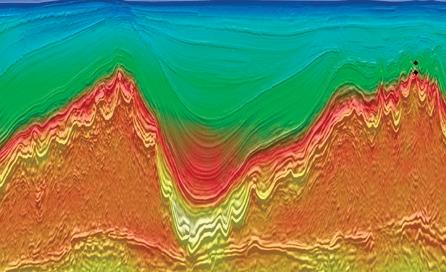

Shearwater GeoServices is planning to introduce its first dual ROV seismic vessel, designed to deploy ocean bottom nodes in both deep and shallow water. The vessel will also be able to provide high-quality source for surveys and conduct towed-streamer surveys.
The dual ROV vessel is expected to be available to clients early in the second quarter of 2023 after a conversion of the SW Tasman multi-purpose vessel.

‘This is the world’s first commercial multi-technology geophysical ROV vessel with source and towed-streamer capability, and able to perform ocean bottom ROV surveys as a single unit,’ said Irene Waage Basili, CEO of Shearwater. ‘Having our own dual ROV vessel will support improved risk
management and operational performance, and in a market with capacity constraints, it enables us to offer robust solutions to our clients using our own assets.’
Ulstein Design and Solutions, the original vessel’s designer, will provide conversion engineering, with Evotec providing launch and recovery solutions and ROVOP providing dual work ROVs with associated ROV personnel.
Meanwhile, Shearwater has won a contract for a 1300 km2 ocean bottom node survey over the Petrobras-operated Grand Iara Project, involving the Berbigão, Sururu, and Shared Reservoir of Atapu, in the Santos Basin offshore Brazil
The project is scheduled to start in first quarter 2023 and is expected to last
six months. Shearwater will use its 3x2 six-string omni-directional triple source and nodes deployed by ROV.
‘This is a significant contract and a solid addition to our backlog for the first half of 2023,’ said Basili.
Norway has received applications from 26 companies for its Awards in Predefined Areas (APA) 2022.
Most of the companies active on the Norwegian shelf submitted applications before the deadline on 12 September.
They are Shell, Aker BP, Chrysaor, Concedo, ConocoPhillips, DNO, Equinor, INPEX Idemitsu, KUFPEC, Lime Petroleum, Longboat Energy, LOTOS, M Vest
Energy, Neptune Energy, OKEA, OMV, Pandion Energy, Pandion Energy, Petrolia NOCO, Source Energy, PGNiG Upstream, Sval Energi, TotalEnergies, Vår Energi, Wellesley Petroleum and Wintershall Dea.
‘It’s gratifying to note the continuing significant interest in investigating new exploration acreage, given the many awards made in the most recent APA processes,’ said Kalmar Ildstad, director
licence management at the Norwegian Petroleum Directorate.
The NPD is evaluating the applications, with focus on geological understanding and plans for exploring the areas.
When production licences are awarded in early 2023, emphasis will also be placed on the companies’ technical expertise and experience, as well as their financial strength.
TGS has launched Amendment Phase II ultra-long offset ocean-bottom node acquisition in the US Gulf of Mexico.

The 151 OCS block survey will begin in December 2022 and is expected to be completed during the first quarter of 2023. Key to this project is the uplift this data will bring to full-waveform inversion (FWI) velocity model building.
Data acquisition will be conducted by Magseis Fairfield (now a TGS company) as a contractor to TGS. Results from
the data are expected in Q4 2023. This project extends the first phase of the survey that was acquired to the east in 2018. On completion of phase two, TGS
will have built a library of more than 550 OCS blocks of ultra-long offset data in the US Gulf of Mexico over the past four years.
Kristian Johansen, CEO at TGS, said, ‘Following the passing of the Inflation Reduction Act, there is a clear roadmap for future licensing rounds and increased activity in the Gulf of Mexico. As a result, TGS feels this is an ideal time to continue investing in ultra-long offset node data to support industry needs in this highly prospective area.’
Licensing rounds have fallen to a more than 20-year low as the energy sector struggles to shake off the effects of the Covid-19 pandemic and the ensuing oil market crash, Rystad Energy research has found.

Only 21 lease rounds were completed globally through to August this year, half of the 42 rounds held in the first eight months of 2021. Acreage awarded so far this year has shrunk to a 20-year low of 320,000 km2. Global leasing rounds are expected to total 44 this year, 14 less than in 2021 and the lowest level since 2000.
The political landscape is also contributing to the decrease in licensing awards, with many governments pausing or halting leases and encouraging companies to wrap up exploration activity within already awarded blocks. This trend is likely to continue as governments are less eager to invest in fossil fuel production and instead look ahead to a net zero future, said Rystad.
‘Global exploration activity has been on a downward trend in recent years, even before the Covid-19 pandemic and oil market crash, and that looks set to continue this year and beyond. It is clear that oil and gas companies are unwilling to take on the increased risk associated with new exploration or exploration in environmentally or politically sensitive areas,’ said Aatisha Mahajan, vice-president of analysis, Rystad Energy.
Total onshore acreage awarded in leasing activity has plummeted from more
than 560,000 km2 in 2019 to a mere 115,000 km2 far this year. Offshore leasing acreage hit a high point in 2019 before dropping sharply in 2020 and has remained relatively flat in the past two years.
Concluded lease rounds have dropped significantly in Russia, the US and Australia this year. These countries have held five lease rounds put together so far this year – three in Russia and one each in the US and Australia – down from 17 rounds in the first eight months of 2021 (eight in Russia, five in the US and four in Australia). The drop in the US is primarily driven by the cancellation of Lease Sales 259 and 261 in the Gulf of Mexico and Cook Inlet in Alaska.
The decline in leasing activity has resulted in a considerable drop in Russian acreage awards, falling 90% from a year ago to 9000 km2, while licensed acreage in Africa shrank 70% to just 46,000 km2 spread across Angola, Egypt, Morocco and Zimbabwe, the only African countries to award new exploration acreage to date
in 2022. On the other hand, new acreage awarded in Asia between January and August nearly quadrupled from the same period last year, while South American awarded acreage surged by 140%.
Asian licensing has bucked the trend with increased activity and blocks awarded in Malaysia, Indonesia, India and Pakistan.
Brazil is the largest contributor in terms of blocks awarded so far this year, with 59 auctioned during its Third Permanent Offer Round. Shell and TotalEnergies took all eight offshore blocks on offer. The remaining 51 onshore blocks in the Tucano, Espirito Santo, Potiguar, Reconcavo and Sergipe Alagoas basins went to regional players.
Other sizeable block awarders were Norway with 54 new licences in its APA 2021 round, India with 29 blocks its OLAP Rounds 6 and 7, and Kazakhstan’s fourth oil and gas auction round, in which 11 blocks were awarded. In Africa Egypt recently awarded nine blocks and Angola granted two blocks. In South America there was an offshore licensing round in Uruguay, where three exploration blocks were awarded – blocks OFF-2 and OFF-7 to Shell and Block OFF-6 to US independent APA. Challenger Energy signed a 30-year licence for OFF-1 through direct negotiation. Ecuador is planning to offer natural gas blocks in the Gulf of Guayaquil in 2024 after auctions for onshore areas completed next year.
The UK has received 26 bids for its first-ever carbon storage licensing round.
Nineteen companies bid for 13 areas on offer off the coasts of Aberdeen, Teesside, Liverpool and Lincolnshire.
The licensing round was launched on 14 June with applications closing on 13 September, and the UK North Sea Transition Authority (NSTA) is evaluating the bids with a view to awarding licences in early 2023.
Once the sites are in operation, they
could make a significant contribution to the aim of storing 20-30 million tonnes of carbon dioxide (CO2) a year by 2030, said the NSTA.
The round was opened in response to significant commercial interest and the areas selected are based on geology, proximity to existing infrastructure and links to industrial clusters which are looking to carbon storage to meet their decarbonisation goals.
Up to 100 CO2 stores will be needed
for the UK to meet net zero by 2050. The first injection of CO2 could come 4-6 years after a licence is awarded.
Nick Richardson, NSTA head of exploration and new ventures, said: ‘We were very pleased with the quantity and quality of applications we have received from a diverse range of applicants. The clear appetite among companies to get involved shows that the UK is well-positioned to become a world-leader in the sector.’
CGG has joined a research project led by Bangor University in Wales on protecting biodiversity and conserving species around offshore windfarms while also supporting windfarm developers to design long-term environmental monitoring strategies.
The company will provide high-performance computing resources, from its global capacity of 310 petaflops, for complex climate and sediment transport modelling to determine the impact of offshore windfarms and climate change in the East Irish Sea. It will also provide
machine learning (ML) expertise drawing on experience from previous research projects with Bangor University on the use of ML for automated species identification, substrate and habitat classification in the Irish Sea to map benthic habitats, natural capital and biodiversity net gain/loss in this area. Analysis of seabed properties including grain characterization, mineralogy, geochemistry, and meiofaunal surveys will be performed by CGG’s Geoscience Laboratories to ground-truth ML and substrate mapping data. Finally, CGG will analyse the impact of offshore windfarms on marine wildlife.
Professor David Viner, head of environmental science, CGG, said: ‘The aim of this research is to deliver an understanding of how offshore wind deployment will affect the seabed and the wider marine ecosystem. CGG will have an important role to play by providing key resources including subject matter expertise, HPC and advanced technology to improve data resolution and analytics to enable our
partners to harness renewable energy in an envrionmentally responsible manner.’
The project will utilize data supplied by Mona Offshore Wind Ltd (a joint venture between EnBW and BP), ENI, Ørsted, RWE and the UK Met Office among others. The £2 million, four-year Ecowind-Accelerate project is funded by the UK Natural Environment Research Council (NERC) and the UK Crown Estate.
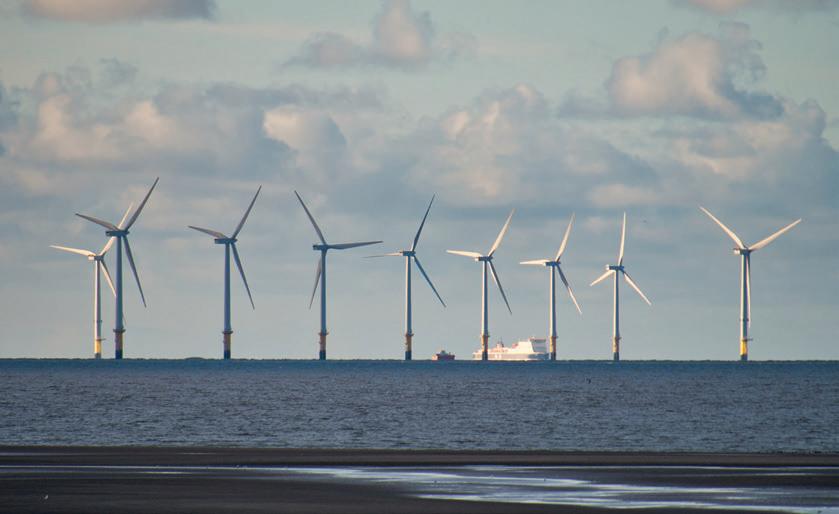
Meanwhile, CGG Earth Data has licensed its GeoVerse carbon storage database to TotalEnergies. The high-performance computing and machine learning-based product helps to assess carbon storage opportunities coupled with a desktop-ready database. Dechun Lin, EVP, Earth Data, CGG, said: ‘Our screening studies leverage our data integration capabilities, technology and geoscience expertise to address energy transition challenges in the areas of geothermal resources, critical minerals and carbon storage.’
PGS has launched the latest extension of its Congo Vision dataset, which will increase regional coverage by nearly 50%. Phase four reprocessing has begun and the final fully reprocessed volume will be available in Q2 2023.
The Congo Vision dataset provides a seamless 3D KPSDM seismic volume across the shelf and deepwater areas offshore Congo. Phases 1-3 have built a contiguous volume of more than 8900 km2 broadband data, created from legacy datasets that have been fully reprocessed using modern depth imaging workflows. Considerably uplifted data quality allows regional interpretations to be made across the presalt section, said PGS.

The project, in partnership with SNPC, will add an additional 4220 km2 of rejuvenated KPSDM data to the deepwater area, covering open blocks Marine XIX and Marine XXX. The data will be
matched and merged with the existing Congo Vision (phase 1-3 product) to create more than 13,100 km2 of contiguous, rejuvenated seismic data offshore Congo.
Meanwhile, PGS has secured ‘solid industry pre-funding’ for a multi-client survey in West Africa. The Ramform Atlas was scheduled to mobilize for the survey late October and acquisition is expected to complete early January.
‘This is the first multi-client project in West Africa since early 2021 as we experience increasing demand for high-fidelity multi-client data,’ said PGS president and CEO, Rune Olav Pedersen.
Early adopters include Petronas and Chevron. Petronas has liberated petabytes of E&P data for users, integrating 12 corporate data stores to a single data platform and improving data management efficiency and optimizing infrastructure. Chevron is working in partnership with
Schlumberger and Microsoft to accelerate the creation of digital technologies across its value chain globally.
Kevin Chambers, VP Subsurface, Chevron, said: ‘As an early adopter of the OSDU Data Platform, Chevron believes ‘the best is yet to come’ as we continue to drive innovative capabilities in the OSDU community.’
Sercel has completed the acquisition of ION Geophysical’s software business. ION’s software business includes the Orca navigation system dedicated to streamers; the Gator navigation system dedicated to OBN; Mesa tools for optimizing land and marine seismic crews; and Marlin software for managing simultaneous marine operations, used for marine seismic crews, as well as for various other offshore operations and harbours
This acquisition enables Sercel to supplement its range of software and ser-
vices, and opens further diversification opportunities in simultaneous marine operations, using the Marlin software. Sercel will operate the newly acquired
technology as a business unit for the near future and the product portfolio will be kept as it is.
Emmanuelle Dubu, Sercel CEO, said: ‘This acquisition is an excellent opportunity for Sercel to broaden its offering and to continue to expand its diversification opportunities with value proven products such as Marlin. The software team also brings significant experience in designing, developing, supporting and selling software services and solutions, which Sercel can further leverage across its various other solution offerings.’
Schlumberger has launched its Enterprise Data Solution, powered by Microsoft Energy Data Services, to make subsurface data more accessible to the global energy industry.

Powered by Microsoft Energy Data Services and compatible with the OSDU Technical Standard, the technology enables customers to integrate subsurface data with technologies and workflows from multiple vendors. Schlumberger said that it is a single, open and interoperable platform with embedded artificial intelligence (AI) and powerful data management tools, which support and accelerate scalable, data-driven decision making.
Rajeev Sonthalia, president, digital and integration at Schlumberger, said: ’Accelerating time to value from AI and digital solutions creates significant new opportunities to increase productivity and boost performance.’
Upstream data capabilities will expand from subsurface to production to well construction. The Enterprise Data Solution will also accelerate advanced workflows to screen, assess and design carbon capture, utilization and storage (CCUS) projects to support rapidly growing demand for large-scale CO2 sequestration. Data previously held in poorly connected silos can now flow
freely across an unbroken data landscape to allow AI and automation to work at previously unimagined scale.

Geolog International has announced a strategic partnership with Petro.ai to deliver machine learning and AI-based data science and predictive products and services.
Richard Calleri, CEO and owner of Geolog, said, ‘Partnering with Petro.
ai allows us to significantly expand our portfolio of machine learning and AI solutions that are designed to improve drilling efficiency and reservoir prediction’.
Dr Troy Ruths, founder and CEO of Petro.ai added: “This partnership will
allow Petro.ai to deliver a new set of analytics and accurate predictions to Geolog’s global customer base. Our geoscience expertise that merges both structured and unstructured data is a natural fit for the high-quality data streams that Geolog collects.’
TGS has completed its 2022 NOAKA Ocean Bottom Node (OBN) seismic survey in the Norwegian North Sea.
The survey was completed two weeks ahead of schedule, marking the second successive season of dense OBN data acquisition in the NOAKA region, said TGS. It also marks the company’s fourth season of multi-client OBN projects in the North Sea after NOAKA21 and the flagship Utsira OBN project, acquired in partnership with AGS.
The NOAKA22 survey extends OBN coverage in the region by 318 km2. TGS has now acquired 475 km2 of OBN data in the region during 2022, including the remaining part of the NOAKA21 survey, which commenced in 2021.
With estimated recoverable reserves of more than 500 million barrels of oil, this area, located within the APA area between Oseberg and Alvheim, has witnessed sig-
nificant infrastructure-led exploration in recent years, said TGS. The NOAKA fields are one of the largest developments on the NCS, and further prospectivity is anticipated, driven by the enhanced subsurface understanding associated with high-resolution OBN seismic imaging, TGS added.
‘Imaging experts will utilize full azimuth and ultra-long offsets to understand and illuminate the complex geology in the region. In addition, multi-component
Petronas has announced a gas discovery from its Cengkih-1 exploration well in Block SK 320 in the Central Luconia Province, 220 km off the coast of Bintulu, Sarawak, offshore Malaysia. The well was drilled to a total depth of 1680 m, hitting more than 110 m gas column in Miocene Cycle IV/V pinnacle carbonate reservoirs. Mubadala Petroleum operates the block with a 55% interest in the production sharing contract (PSC). Petronas holds 25% and Shell 20%.
Shell (67.5%), TotalEnergies (22.5%) and OQ (10%) have signed an exploration and production sharing agreement with the Ministry of Energy and Minerals of the Sultanate of Oman in the onshore Block 11. The partners will shoot a seismic survey in late 2022, with a first exploration well planned to be drilled in 2023.
UK Oil & Gas has completed acquisition of the Phase 2 seismic programme over its Turkey Resan licence. The programme, consisting of four new 2D seismic lines over the possible updip western extent of the Basur-1 oil discovery and Prospect B to the south, was
delivered ahead of schedule and under budget. Once the seismic data has been processed, the company will drill a new Basur appraisal well in the first half of next year.
Shell and Exxon Mobi l have launched a simultaneous sale of a large package of offshore natural gas assets in the southern UK and Dutch North Sea. Investment bank Jefferies has been hired to run the sale, which could raise more than $2 billion.
Petronas has announced its first oil discovery in Suriname, at the Baja-1 well in Suriname’s offshore Block 53. The well, 189 km offshore Suriname in water depth of 1140 m, was drilled to a total of 5290 m. It also encountered light oil in the Campanian-aged sedimentary sequence. Petronas holds a 30% participating interest in the block which is operated by APA (45%) with CEPSA (25%).

One-Dyas, EBN and Hansa Hydrocarbons have made a final investment decision for the development of the N05-A gas field in the North Sea. The decision involves an investment of more
processing will lead to stable low frequencies, high signal-to-noise ratios, reliable AVO, and the ability to distinguish between structure and attribute anomalies for field development and near-field exploration,’ said TGS in a statement.
Final processing deliverables are anticipated in Q4 2023. Meanwhile, TGS expects net revenues for Q3 2022 to be approx. $135 million, compared to $200 million in Q3 2021. Net segment reported revenue is expected to be $118 million.
Kristian Johansen, CEO at TGS, said: ‘With approximately half of revenues made up by late sales, the strong underlying development from the first half of the year continued in the third quarter. Cash flow remains robust. The net cash position was close to $200 million on 30 September, despite the proceeds for the ION and Prediktor transactions being paid during the quarter.’
than $485 million. This makes it the largest investment in a natural gas development in the Netherlands in the past 15 years. The Netherlands awarded the final permits for the development of the North Sea field on 3 June, 2022.
Angkor Resources has received final licensing for exploration, development, and production on Block VIII, onshore Cambodia.
Shell has taken control of the Victory discovery in the UK North Sea, a ‘development-ready’ project in the West of Shetland region. Reabold Resources Plc has confirmed that Shell was the previously unnamed buyer in its $41 million deal to sell Corallian Energy (a vehicle part-owned by Reabold) which held the Victory project.
Vår Energi has been given a drilling permit for wells 7122/8-1 S and 7122/9-1 in production licence PL 229/229 E in the Barents Sea. Well 7122/8-1 S licensees are Var Energi (65%) and Equinor (35%). Planned spud date was September 2022. Well 7122/9-1 licensees are ABP (50%) and Vår Energi (50%). Planned spud date was October 2022.
The North Sea oil and gas industry has reported cuts in emissions of more than a fifth between 2018 and 2021.
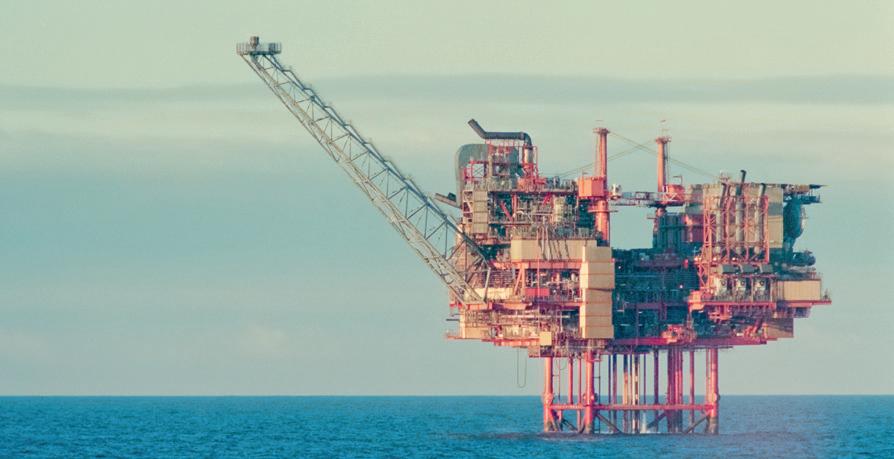
The Emissions Monitoring Report from the North Sea Transition Authority (NSTA) shows that greenhouse gas emissions were cut by an estimated 14.6% to 14.3 million tonnes of CO2e last year, adding up to an overall reduction of 21.5% since 2018.
NSTA projections indicate the sector is on track to meet interim emissions reduction targets – of 10% by 2025 and 25% by 2027 – which were agreed in the North Sea Transition Deal (NSTD) between the sector and UK government in 2021.
To hit the 2030 goal of halving emissions it will be upgrading platforms to run on clean electricity, instead of gas or diesel, and at least two electrification projects will be commissioned by 2027, it added.
In the first half of 2021, the NSTA started requiring licensees to implement emissions reduction plans for new and existing projects and introduced guidance to clamp down on flaring, the source of more than a fifth of UKCS emissions, and venting. Total offshore flared volumes have fallen by 20% in 2021 and venting by 22%.
Since its revised strategy came into force in February 2021, the NSTA has worked with industry on initiatives which have prevented the emission of 1.2 million tonnes of CO2e.
Dr Andy Samuel, NSTA chief executive, said: ‘The industry has made impressive progress on reducing emissions during a turbulent period marked by a global pandemic and unprecedented price volatility. Flaring has been on a declining trend since 2018 and the reductions achieved in 2021 alone were equivalent to the annual gas demand of 130,000 UK homes.’
Silixa has launched the intelligent Distributed Acoustic Sensor (iDAS-MG) to optimize measurements in short-and longrange applications.
The sensor has variable gauge lengths that offer more configuration options, allowing operators to optimize distributed acoustic measurements to the desired spatial resolution, sensitivity and range without compromising the established stability and measurement repeatability of iDAS.
Data acquisition parameters can be adjusted to record the required signal wavefield, minimizing subsequent processing and interpretation time, said Silixa.
Glynn Williams, Silixa CEO, said: ‘The technology will offer the flexibility to achieve fine spatial resolution for
short-to-moderate range applications while also enabling applications that require measurement ranges of many tens of kilometres, all the while maintaining low instrument noise to achieve optimal SNR.’ iDAS-MG comprises several optical processors embedded in a single interrogator unit. Longer gauge lengths offer better signal-to-noise performance over large-scale deployments, while shorter gauge lengths offer more precise, smallscale high-frequency measurements, said Silixa.
The same iDAS-MG interrogator can be deployed for sub-surface seismic imaging in oil and gas, carbon sequestration, geothermal and aquifer projects but also in near surface active and passive surveys.
Eni has made an application to develop a CCS project at the Hewett depleted gas field in the UK Southern North Sea, aimed at decarbonising the Bacton and Thames Estuary area. The field could store about 330 million tonnes of CO2.
Prvaris Energy has agreed with renewable energy producer Total Eren to develop solutions to transport green hydrogen to Asia and Europe. Total Eren is working on green hydrogen projects, including in Latin America (Chile, Argentina, Brazil, Colombia), in Australia, and in Africa (Morocco, Egypt and Mauritania). Provaris and Total Eren will identify and assess green hydrogen projects currently developed by Total Eren that can utilize Provaris’ GH2 carriers for bulk transport of compressed hydrogen.
Total Energies has established the DTU-TotalEnergies Excellence Centre of Clean Energy at the Technical University of Denmark (DTU). The centre will develop solutions that will reduce the intermittence of renewables and accelerate the decarbonization of industrial facilities.
OMV has started work on geothermal projects in Austria in Germany. It is conducting a production test to analyse the geothermal potential in the Vienna Basin at a depth of about 2800 m. In Lower Saxony OMV has a 50% interest in a geothermal exploration project called Thermo. This involves a small aircraft taking gravity and magnetic measurements over an area of around 5000 km² to gather geological information. OMV’s partner is ZeroGeo Energy (50%).
Petronas has signed an agreement with Japan under which the Malaysian energy giant will work with Japanese companies on value chain development of hydrogen and ammonia, renewable energy, carbon capture and storage and green mobility.
Noordgastransport (NGT) and NOGAT have become the first pipeline owners to receive the Certificate of Fitness for transport of green hydrogen through their pipelines in the North Sea.
The US Bureau of Ocean Energy Management (BOEM) is improving its processes for identifying future offshore wind energy sites in the Gulf of Mexico, Central Atlantic and Gulf of Maine, and off the Oregon coast.

BOEM is collaborating with the National Oceanic and Atmospheric Administration (NOAA) and the National Centers for Coastal Ocean Science
(NCCOS) to employ a spatial model that analyses entire marine ecosystems to identify the best areas for wind energy sites. BOEM and NOAA recently collaborated to use the NCCOS tool to identify draft WEAs in the Gulf of Mexico.
BOEM is also improving visibility into how the agency balances and evaluates the multiples uses and resources of the US OCS. It has shared the analysis
and rationale used to develop recommendations for the draft WEAs in the Gulf of Mexico on BOEM’s webpage, a practice it will continue for other areas.
Meanwhile, the BOEM has accepted 307 highest valid bids from Lease Sale 257 in the Gulf of Mexico, totalling $189,888,271. BOEM originally held the lease sale in November 2021; a federal judge invalidated the results in February.
TGS has expanded the wind resource data in its Wind AXIOM solution, which enhances data and information across all stages of offshore wind development.
pany’s Wind AXIOM incorporates wind resource data from ERA5’s native model levels, allowing viewing and downloading of ERA5 data across eight different heights from 10 m up to 205 m.
‘The native model level data from ERA5 have not been easily accessible previously, so subscribers now have a very quick and simple way to access ERA5 long-term reference time series at locations globally,’ said TGS.
at prospective offshore projects quickly, said TGS.
Wind AXIOM now includes Bid Developer or Lease Developer upgrades for deeper analysis utilizing richer data sources. These subscription levels include high-resolution numerical weather prediction model simulations and observational data from TGS’s floating LiDAR buoy measurement campaigns.
Subscribers are now ‘one click away’ from global ERA5, NEWA, and GWA wind resource data, said TGS. The com-
The platform includes energy output calculations and estimated revenue projections. It also provides access to global contextual data layers, including transmission infrastructure, shipping lanes, and several environmental categories and marine restrictions. In addition, the data layers and analytic capabilities within the Wind AXIOM Explorer allow users to understand the feasibility and risks
Jan Schoolmeesters, EVP of digital energy solutions at TGS, said: ‘TGS has designed its Wind AXIOM analytics platform to provide users with an easy-to-use and scientifically justified commentary on new offshore wind projects worldwide, both in upcoming lease-round areas and yet-to-be-defined locations.’
TGS is offering a free trial of the Wind AXIOM platform at tgs.com/wind.
Chevron and Mitsui Oil Exploration Co (MOECO) have agreed to explore the feasibility of advanced geothermal power generation in Japan. The partnership will evaluate Advanced Closed Loop (ACL) technology for a future joint pilot project in Japan and in future globally.
‘Unlike conventional geothermal projects, which use traditional steam turbines requiring high temperatures often found in concentrated locations limited by geological characteristics, ACL can
potentially enable access to geothermal resources at a wider range of temperatures and geologies through the application of alternative technology above and below the surface,’ said Chevron.
Meanwhile, the company is part of three joint ventures that have been granted an interest in three greenhouse gas assessment permits offshore Australia. The blocks, including two in the Carnarvon Basin off the north-western coast of Western Australia and one in the
Bonaparte Basin offshore Northern Territory, total more than 31,500 km2. Permit G-10-AP (1762 km2) involves a joint venture of Chevron, Woodside Energy (Operator), BP, Japan Australia LNG (MIMI), owned equally by Mitsubishi and Mitsui & Co, and Shell. Permit G-9AP (3589 km2) involves a joint venture of Chevron and Santos (operator). Permit G-11-AP (26,239 km2) involves a joint venture of Chevron, Santos (Operator), and SK E&S.
Improving market conditions for seismic contractors and data companies are fuelling innovation in the marine seismic sector, especially in the growing fields of ocean bottom seismic acquisition and the installation of windfarms and other offshore renewable energy projects, to provide a greater volume of data that is also more sophisticated.
Stefan Wenau et al present an ultra-high-resolution seismic measurement system to detect and localise small-scale objects in marine sediments with high accuracy using seismic diffraction imaging.
Stian Hegna investigates using the acoustic wavefield generated by a vessel for imaging the subsurface by estimating the emitted wavefield from recorded direct arrivals, and discusses using this method with different acquisition configurations.
Ed Hager et al explain the process of creating a node to take ocean bottom seismic to ‘the next level’.
Pedro V. Zalan et al demonstrates how the same source rocks from the African side of the South Atlantic show the potential for petroleum systems in the South American side of the southern South Atlantic.
Lucy MacGregor et al present an ultra-high-resolution seismic system capable of characterising the shallow seafloor at metre or sub-metre resolution.

Dave Ridyard et al discuss how ray-based wavefront modelling can be used to evaluate competing acquisition techniques with significantly different illumination properties and associated acquisition costs.
Jeremy Aznar et al model the process of filling the air chamber of the lowfrequency source and analyse the dependency of the filling time on the length and diameter of the umbilical. They also discuss a new shot controller technology.
First Break Special Topics are covered by a mix of original articles dealing with case studies and the latest technology. Contributions to a Special Topic in First Break can be sent directly to the editorial office (firstbreak@eage.org). Submissions will be considered for publication by the editor.
It is also possible to submit a Technical Article to First Break. Technical Articles are subject to a peer review process and should be submitted via EAGE’s ScholarOne website: http://mc.manuscriptcentral.com/fb
You can find the First Break author guidelines online at www.firstbreak.org/guidelines.
January Land Seismic
February Digitalization / Machine Learning
March Reservoir Monitoring
April Unconventionals and Passive Seismic
May Global Exploration Hotspots
June Leading Geosciences in a New Era
July Modelling / Interpretation
August Near Surface Geo & Mining
September Reservoir Engineering & Geoscience
October Energy Transition
November Marine Acquisition
December Data Management and Processing
More Special Topics may be added during the course of the year.
Applications:
Urban underground space investigation, geological disaster and harmful geology structure detection, geothermal and water resources exploration, engineering survey, dense array observation, vibration monitoring, etc.

























International Sales

Unit 145, 3901-54 Ave, NE
Calgary,AB T3J 3W5 Canada
Tel:+1-403-264 1070

Toll Free:+1-888-604 SOLO(7656)
Email: sales@SmartSolo.com






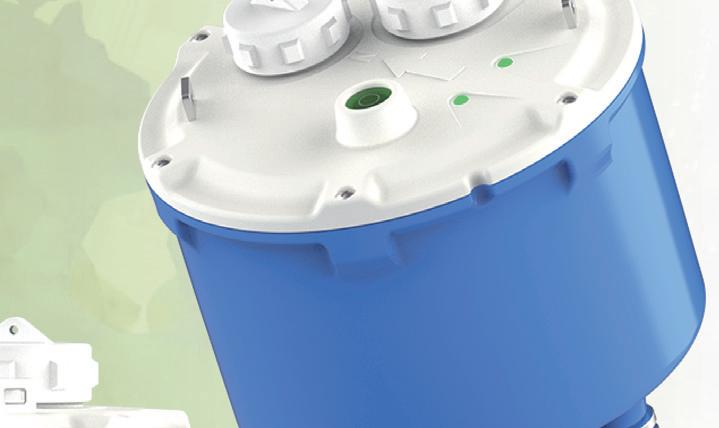

Web: www.SmartSolo.com
5-8
November 2022
Bogota Colombia
3 rd EAGE Global Energy Transition Conference & Exhibition www.eageget.org Riyadh
John’s Canada 15-17 Nov Sixth EAGE Rock Physics Workshop Impacts & Trends of the Digital Transformation www.eage.org
21-22
EAGE/SBGf Workshop on Reservoir Monitoring and its Role in the Energy Transition www.eage.org
St
Kyiv & online Ukraine
Aberdeen & online United Kingdom

December
1-2 Dec Fourth EAGE Workshop on Unconventional Resources www.eage.org
5-7 Dec 2 nd EAGE Workshop on Fiber Optic Sensing for Energy Applications in Asia Pacific www.eage.org
6-8 Dec 2 nd EAGE/SEG Workshop on Geophysical Aspects of Smart Cities www.eage.org
February 2023
15-17 Feb Fifth EAGE Naturally Fractured Reservoirs Workshop www.eage.org
21-23 Feb 2 nd AAPG/EAGE Papua New Guinea Petroleum Conference & Exhibition www.eage.org
March 2023
1-3 Mar International Petroleum Technology Conference (IPTC) 2023 2023.iptcnet.org
Bogota Colombia
Kuala Lumpur Malaysia
Hong Kong Hong Kong
Aix-en-Provence France
Port Moresby Papua New Guinea
6-9 Mar 5 th Asia Pacific Meeting on Near Surface Geoscience & Engineering www.eage.org Taipei
7-9 Mar Middle East Oil, Gas and Geosciences Show 2023 www.meos-expo.com Sanabis Bahrain
20-22 Mar Third EAGE Digitalization Conference and Exhibition www.eagedigital.org
May 2023
9-10 May 2nd EAGE Workshop on Quantifying Uncertainty in Depth Imaging www.eage.org
16-18 May Energy Geoscience Conference 2023 https://www.energygeoscienceconf.org/
June 2023
5-8 Jun 84th EAGE Annual Conference & Exhibition www.eageannual.org
August 2023
15-16 Aug 2 nd EAGE Conference on Faults in Groundwater, CO2 and Hydrocarbons in Asia Pacific www.eage.org
September 2023
September Near Surface Geoscience Conference & Exhibition 2023 www.eagensg.org
3-7 Sep Fifth EAGE Conference on Petroleum Geostatistics www.eage.org
10-15 Sep IMOG 2023 31st International Meeting on Organic Geochemistry www.imogconference.org
Kingdom
Kuala Lumpur Malaysia
United Kingdom
Austria
United Kingdom
France
Lumpur Malaysia 18-20 Sep Seventh EAGE Borehole Geophysics Workshop www.eage.org
12-13 Sep EAGE Conference on the Future of Energy- Role of Geoscience in the Energy Transition www.eage.org
Como Italy 18-20 Sep Second EAGE Seabed Seismic Workshop www.eage.org
November 2023
21-22 Nov EAGE Workshop on Unlocking Carbon Capture and Storage Potential www.eage.org
Como Italy
Lumpur Malaysia

































HOST SPONSOR MAIN SPONSOR







5-8 JUNE 2023







Pearl changes the rules of Ocean Bottom Seismic, offering better survey designs for exploration, appraisal, development, production optimisation and monitoring.
shearwatergeo.com
